Explore the

Okefenokee Swamp
Something for everyone.
Explore the wildlife and vast wilderness, past Native American civilizations, pioneers and settlers, waterways and habitats of North America’s largest “blackwater” swamp. Whether you’re looking for a few hours of family fun by land or water, or whether you’re seeking a multi-day immersion in the solitude of the swamp’s 438,000 acres of natural splendor, we have something for everyone at our three unique swamp entrances.
Things to Do
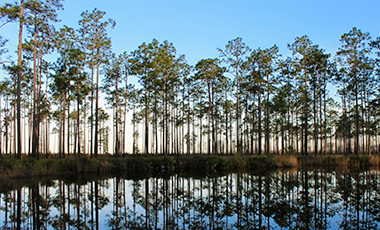
Auto Tour Route
Okefenokee National Wildlife Refuge
The Auto Tour Route, also known as the Swamp Island Drive at the Okefenokee National Wildlife Refuge, is a 7.2-mile paved road, which can be used by cars, bikes and walkers. This scenic route is a great way to experience the beauty of the refuge in a comfortable, stress-free way. The Swamp Island Drive provides access to several hiking trails as well as the Chesser Island Homestead and Chesser Island Boardwalk. Additionally, the Swamp Island Drive has an interpretive brochure to aid guests as they are learning about the flora, fauna, and history of the refuge.
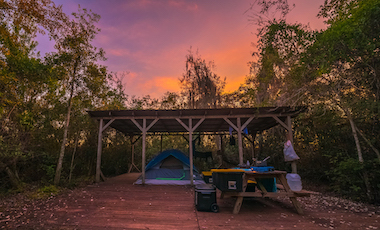
Stephen C. Foster State Park
Okefenokee National Wildlife Refuge Camping Permits
There are 63 tent and RV campsites within Stephen C. Foster State Park, offering many opportunities for visitors to experience the unique camping environment of the park. While camping, visitors are close to the park’s many activities, and astronomy enthusiasts can enjoy some of the best stargazing in the southeast.
A bucket list trip for visitors from around the globe, camping in the heart of the Okefenokee National Wildlife Refuge is an adventure for both the expert and the novice in the outdoors. A variety of overnight camping platforms and islands provides opportunities for camping from one-four nights in the swamp.
Photo credit: Jay Blanton
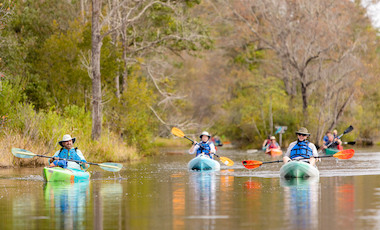
Canoeing, Kayaking & Boating
Okefenokee National Wildlife Refuge w/ Okefenokee Adventures
Okefenokee Swamp Park
Whether bringing your own boat or renting one, paddling, kayaking and boating is an unmatched opportunity to experience the swamp. Public boat launches, canoe, kayak and Jon boat rentals are available at both the Okefenokee National Wildlife Refuge and Stephen C. Foster State Park entrances, while the Okefenokee Swamp Park Paddle Sundays provide visitors at this entrance with an opportunity to rent kayaks or canoes on Sundays.
Photo credit: Chris Moncus
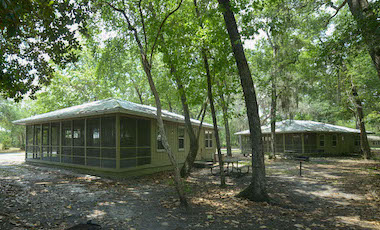
Visitors looking for a more home-like overnight experience at Stephen C. Foster State Park will find our park cottages a great alternative to camping. The cottages can hold 6-8 people, and some can accommodate wheelchairs, offering a comfortable and convenient overnight stay.
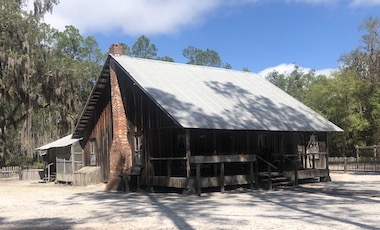
Cultural Sites/Interpretation
Cultural sites are available at all three swamp entrances, providing visitors with a window into the past cultures, history and activities within the resource-rich Okefenokee.
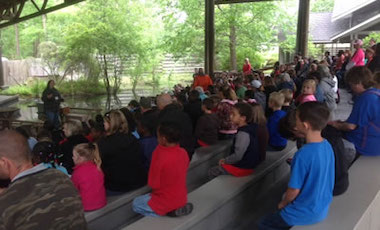
Daily Nature Shows
The Eye on Nature shows at the Okefenokee State Park are daily interactive experiences that teach visitors about the different native wildlife that make their homes in the park. These shows are held at the Okefenokee State Park Nature Center and/or the Lagoon Amphitheater and feature live animals, including snakes, turtles and even baby alligators.
- Next »
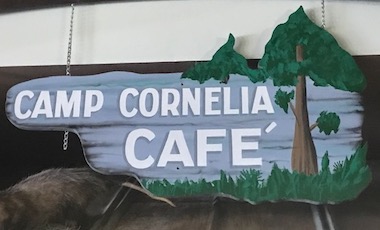
Camp Cornelia Café
Okefenokee Adventures
Cornelia Café is located in the Okefenokee National Wildlife Refuge and is operated by the Refuge onsite concessionaire, Okefenokee Adventures. The restaurant offers delicious food, including sandwiches, salads, vegetarian options, and low country shrimp boils, and is the perfect place to launch, relax or refuel for your swamp adventure.
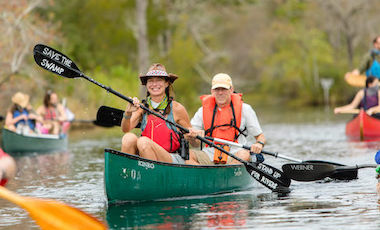
Okefenokee National Wildlife Refuge Wilderness Canoeing
Whether you bring your own boat (canoe/kayak, or boat w/ motor less than 10HP), or rent from Okefenokee Adventures, hitting the water trails is an unmatched opportunity to truly experience what the refuge has to offer. A public boat launch provides access to 120-miles of boating trails for day-use or overnight trips. Canoes, kayaks, and Jon boats are available to rent at Okefenokee Adventures for travelers that would like the experience of being out on the water trails, but do not have a boat of their own. All guests need to sign in/out if going out on the water – trail conditions change rapidly, check with either Okefenokee Adventures or the Visitor Center on the latest status of water levels and trail closures. Additional public boat launches at the Okefenokee National Wildlife Refuge are located at Kingfisher Landing and the Suwannee River Sill.
Chesser Island Homestead
Chesser Island Homestead is a living history museum showcasing structural necessities of self-sufficient living in the resource-rich Okefenokee from the 1850s through the 1950s. Walk the grounds of the Homestead to take a step back in time to the days of the early settlers. Volunteer docents offer tours of the inside of the house seasonally.
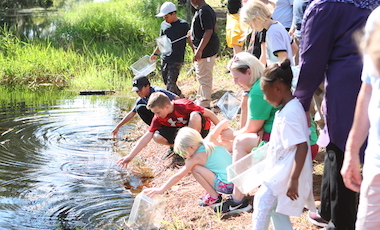
Educational Programs
Okefenokee National Wildlife Refuge - For Educators
Taking your class on a field trip to the Okefenokee National Wildlife Refuge is an incredible way to give your students an unforgettable, hands-on experience in nature. You can schedule a self-guided trip, take one of the guided tours, or request environmental education programs at the refuge.
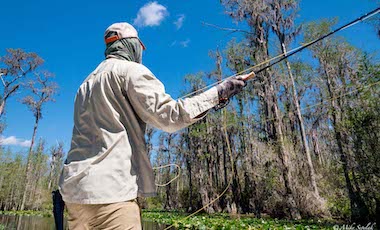
Fishing on National Wildlife Refuges
The Okefenokee National Wildlife Refuge provides exciting freshwater fishing opportunities for bream, catfish, bowfin, and even the occasional largemouth bass! A variety of different habitats are easily accessible from a boat, including many natural lakes and prairies, along with the Suwannee Canal, which offers deeper water than the rest of the swamp. All of the waters along the refuge’s water trails are open to fishing. Bank fishing opportunities are available along the Canepole Trail and around the refuge boat basin. State and refuge regulations apply.
Photo credit: Mike Sepelak
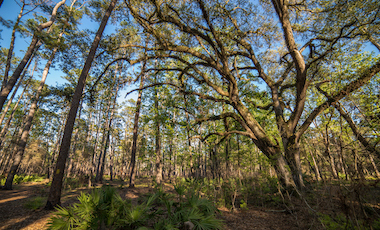
Billy’s Island
Accessed by boat through Stephen C. Foster State Park, this historic island in the Okefenokee has been inhabited by man for generations. Most recently, the Hebard Cypress Company had a lumber camp on the island in 1918, eventually supporting approximately 600 people. This island is the second largest in the swamp and is only accessible by boat.
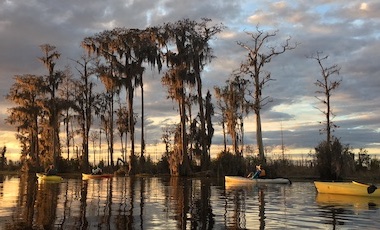
Canoeing, Kayaking and Boating
For adventurous visitors, canoe and kayak rentals are available to explore the waters of the swamp. Canoeing and kayaking allow for an up-close and personal experience of the swamp, and unparalleled wildlife viewing. As an alternative to canoes and kayaks, Stephen C. Foster State Park also offers Jon boat rentals for park visitors who are interested in further exploration of the swamp waters.
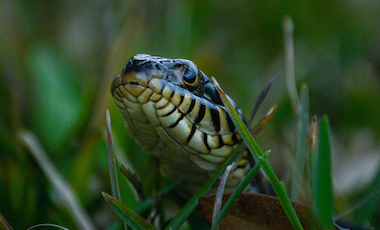
Stephen C. Foster State Park offers a variety of educational group experiences, including guided boat tours, paddle tours, and hiking. They also provide educational programs that cover topics including astronomy, reptiles, swamp topography, and more.
Stephen C. Foster State Park is a prime fishing location, particularly for warmouth, bluegill, catfish, chain pickerel and bowfin. Canoe, kayak and Jon boat rentals are available through the park, or visitors may bring their own.

The gift shop at Stephen C. Foster State Park provides visitors a convenient way to shop for a variety of items, including apparel, food and snacks, camping supplies, souvenirs, and more.
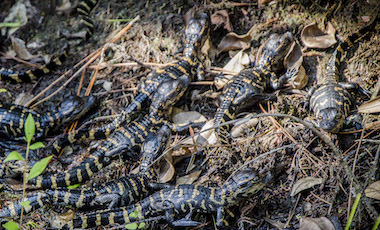
Boardwalks & Nature Center
Okefenokee Swamp Park offers and boardwalks, including one that takes visitors to the tallest observation tower in the swamp. The Nature Center is home to the serpentarium, which houses many different species of snake, as well as a family of bears, turtles, and baby alligators. The center also hosts a variety of interactive activities, including the Eye on Nature series.
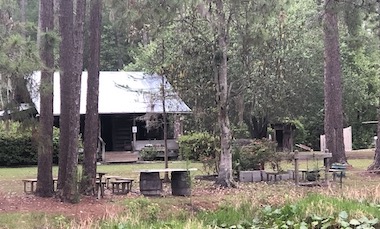
Opportunities for cultural interpretation at the Okefenokee Swamp Park include Vereen Bell Memorial Highway, Cowhouse Island, authentically recreated Timucua and Seminole residences, logging machinery, turpentine equipment, and a moonshine still from the 19th and early 20th centuries. Skull Lake, Pioneer Island and Wildes Cabin exhibits echo times of early Indian cultures, pioneers, movie making and major fires in the Okefenokee.
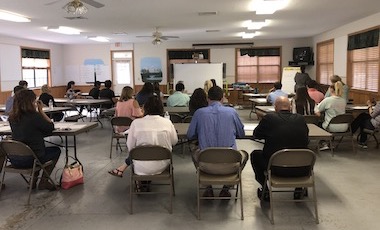
Cypress Cove Annex Group Space
Cypress Cove Annex is a beautiful facility, equipped to handle a variety of events, from business meetings to weddings. The Annex can comfortably hold up to 200 people, has a fully equipped kitchen, and is surrounded by the incredible wilderness of Okefenokee Swamp. Additional indoor meeting space is available at the park Nature Center, while outdoor meeting space includes the Pavilion, the Amphitheater and an outdoor wedding gazebo. Both Cypress Cove Annex and the Nature Center are connected to the internet with fiber optic cable.
Daily ‘Eye on Nature’ Shows
The Eye on Nature shows are daily interactive experiences that teach visitors about the different native wildlife that make their homes in the park. These shows are held at the Nature Center and/or the Lagoon Amphitheater and feature live animals, including snakes, turtles and even baby alligators.

Okefenokee Swamp Park offers field trip reservations for school groups, and discounted guided tour rates for school trips. Reservations can be made four weeks or more in advance to allow your class an unforgettable outdoor education experience.
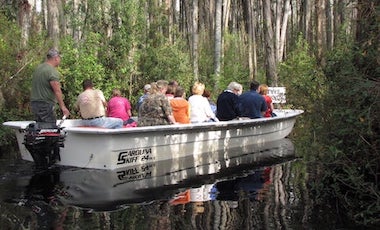
Guided Boat Excursions
Experienced tour guides take park visitors on a 45-minute boat ride through waterways, sharing their knowledge of the cultural and natural history of the area. These tours are a unique way to experience the beauty and history of the swamp, and to encounter some of the natural wildlife along the way. A Group Boat Tour is available too for groups of 12 or more. Reservations required.
Chart Your Course
Activity Map
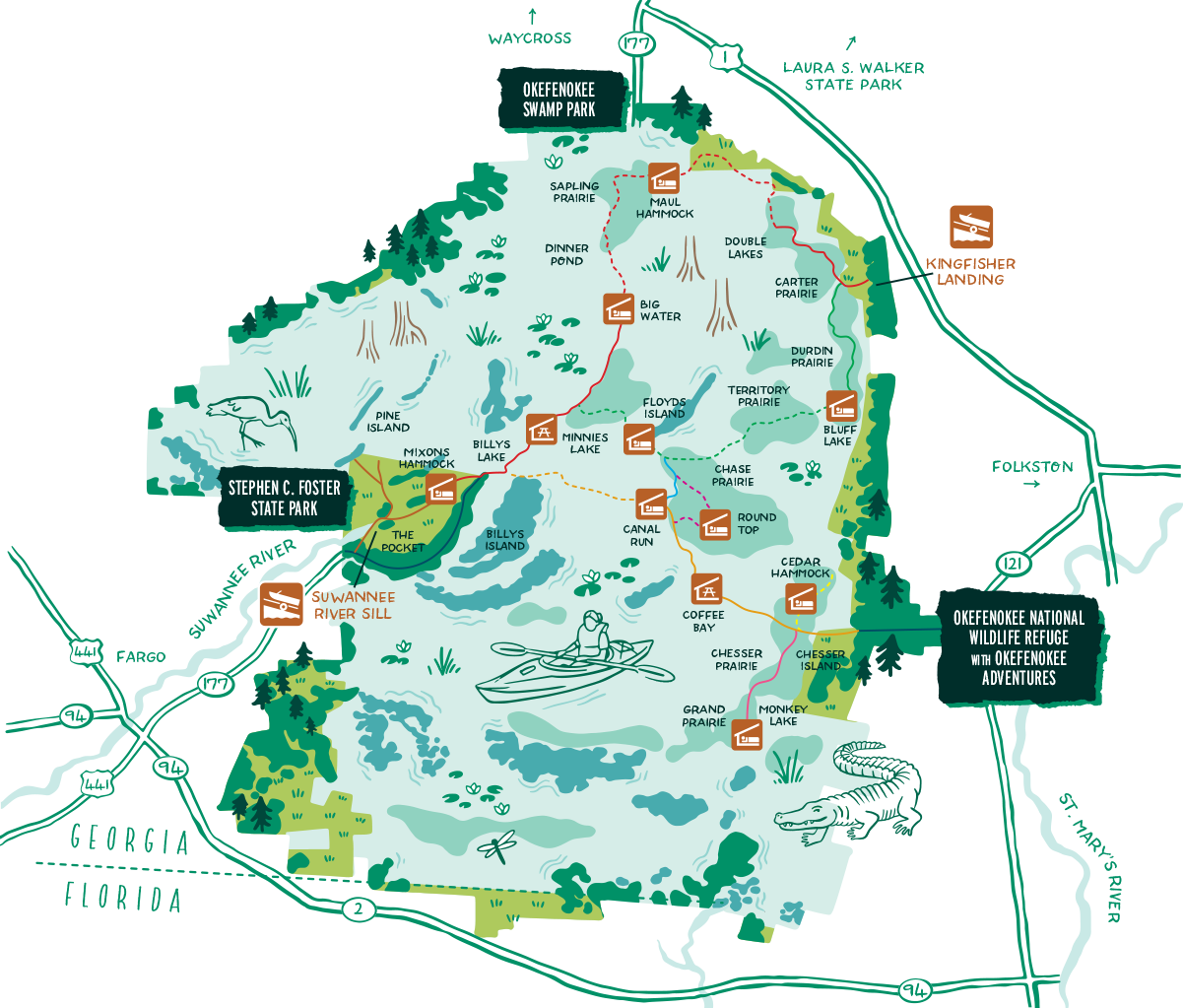
Explore Locations
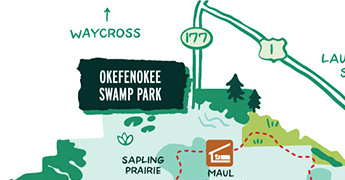
Enjoy a variety of fun activities and a wonderful show-window into the swamp under a forest canopy. Wilderness boardwalks and walkways, guided boat tours along swamp waterways, live wildlife shows and habitats, a pioneer island homestead and railroad tour are just a few of the park highlights.
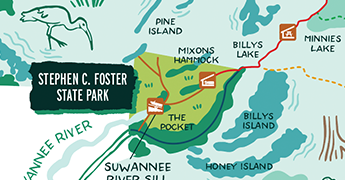
This remote park is a primary entrance to the legendary Okefenokee Swamp. Paddlers and photographers will enjoy breathtaking scenery and abundant wildlife. Stargazers will appreciate the particularly dark sky.
Same-day reservations are recommended for guided boat tours. Ask about our sunset and night tours. Rent canoes, kayaks or Jon boats for further exploration, including a trip to historic Billy’s Island.
Make time for fishing by staying overnight in a cabin or campsite.
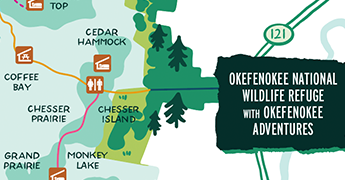
Okefenokee National Wildlife Refuge with Okefenokee Adventures
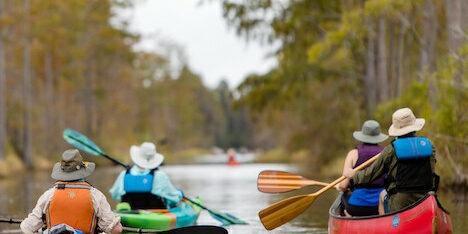
Enjoy exploration and wilderness observation, hiking, driving or biking along our Swamp Island Drive. Stop by our visitor center, take a guided boat tour, or kayak or canoe into our famous swamp prairies through cypress-lined waters, lily pads and grassy islands.
Onsite concession, Okefenokee Adventures, offers canoe, kayak and Jon boat rentals, cafe and gift shop.

At the heart of Southeast Georgia, the historic town of Waycross is a city filled with Southern hospitality and charm with numerous opportunities for dining, lodging and shopping, as well as attractions such as the Historic Downtown district, the Okefenokee Swamp Park, the Southern Forest World Museum, the Okefenokee Heritage Center, and more.
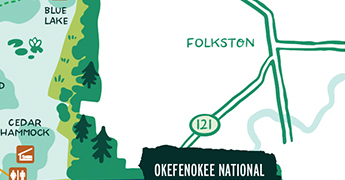
Experience rural South Georgia, with a taste of authentic, small-town charm.
This excellent weekend getaway is complete with beautiful sights, outdoor exploration, and a rich history. Centrally located between Amelia Island, St. Marys, Jacksonville, and Savannah, Charlton County is only a short drive from I-95, making it the ideal place to experience everything South Georgia has to offer.
Get up close and personal with trains by relaxing under the Folkston Funnel, visiting the historical train museum, or even sleeping overnight in a train cart. Immerse yourself in off the beaten path experiences at the Okefenokee Wildlife Refuge. Photograph the overhanging beauty and wildlife or take a step back in time and see how the early swampers dwelled.
Visitor Questionnaire
Tell Us More About you and we can create the best experience.
- Young Children
- Cultural History
- Birdwatching
- 1-2 months from now
- 3-5 months from now
- 6-11 months from now

Discover the Magic of Okefenokee Swamp Tours
Imagine yourself exploring a land of mystery, beauty, and unparalleled biodiversity. You’re about to embark on an adventure like no other – an Okefenokee Swamp tour. From the fascinating history to the unique flora and fauna, there’s something for everyone to discover. Let’s delve into the captivating world of the Okefenokee Swamp and provide you with all the information you need to plan the perfect swamp tour.
Title Image: A gorgeous view on a sunset tour of the Okefenokee Swamp—courtesy of Georgia’s own local guides at Okefeenokee & Satilla Expeditions
Key takeaways:
- Experience the breathtaking biodiversity of the Okefenokee Swamp, including 32 species of frogs and a myriad of unique plants.
- Learn about the rich history of the swamp, from its wealthy owners in the 1890s to its fascinating use of prison labor.
- Discover the swamp’s unique ecosystem, including its intriguing adaptations and natural wonders.
Okefenokee Swamp Tours: Your Ultimate Adventure

The Okefenokee Swamp, also known as “the land of trembling earth” to Native Americans, spans over 440,000 acres–roughly the size of Rhode Island. With a history dating back to the 1890s, the swamp has gone through various stages of development, including the harvesting of valuable cypress trees and the construction of a six-mile canal using prison labor.
As you embark on your Okefenokee Swamp tour, you’ll be immersed in an environment unlike any other, characterized by:
- A unique combination of prairie and forest islands.
- A diverse range of wildlife, including 32 species of frogs that indicate water quantity.
- The 2nd most lightning strikes in the US, after Tampa.
- Natural phenomena like droughts, fires, and rains occurring every 5-7 years.
The Amazing Flora of the Okefenokee Swamp
During your tour, you’ll encounter a diverse array of plant life, including:
- Maiden cane: A member of the bamboo family, this plant thrives in the swamp’s unique ecosystem. It is one of the first plants to form when submerged peat surfaces. These small islands grow larger, forming the “trembling earth” and are the keystone to growth of the islands here and their habitats.
- Cypress trees: These deciduous conifers are extremely valuable and rot-resistant, making them ideal for use in construction and other industries. Their unique adaptations, such as flared bases and horizontal root systems, allow them to thrive in the swamp’s soft, mushy soil. Their roots are very strong and intertwined with neighboring trees. So much so that these trees will snap in the high winds of a hurricane, instead of toppling over.
- Spanish moss: A natural air filter, this bromeliad is an epiphyte, meaning it grows on other plants without harming them. Thick layers of Spanish moss indicate that the area has not experienced a fire in over 50 years.
- Red lichen: Found on myrtle trees, red lichen is an indicator of high oxygen levels and air quality. In fact, the deep recesses of this swamp are even designated a Natural Wilderness Area.

The Fauna of the Okefenokee Swamp
Some of the fascinating creatures you may encounter on your tour include:
- Eastern barred owls with their nests and babies.
- Red-shouldered hawks, soaring through the skies.
- Softshell and Snapping turtles.
- Alligators, ranging from small juveniles, to large adults over ten feet long.

The Intriguing History of the Okefenokee Swamp
As you explore the Okefenokee Swamp, you’ll learn about its storied past, which includes:
- Wealthy owners purchasing the land for 25 cents per acre in the 1890s to harvest cypress trees.
- The use of prison labor to dig a six-mile canal for transporting timber to a mill onsite.
- The influence of Spanish and French explorers, who contributed to the naming of Spanish moss.
Natural Phenomena and Unique Features
Your Okefenokee Swamp tour will also reveal the swamp’s fascinating natural phenomena, such as:
The swamp’s unique drainage system, which flows east to west and eventually drains into the Gulf of Mexico via the Suwannee River.
- The importance of the swamp’s water, which is potable due to its acidity and natural rainwater composition. No outside water flows into the Okefenokee.
- The cyclical nature of the swamp’s climate, characterized by drought, fire, and rain every 5-7 years, which helps shape the ecosystem and maintain its delicate balance.

Preparing for Your Swamp Tour
To make the most of your swamp tour experience, keep the following tips in mind:
- Dress appropriately: Wear comfortable clothing and sturdy shoes, as you’ll be navigating potentially wet and uneven terrain.
- Bring bug repellent: Chiggers, common in the swamp, once caused the first automotive recall due to their infestations in car seat padding recommended by Thomas Edison.
- Stay hydrated: While the swamp water is potable, it’s always a good idea to bring your own water supply to stay refreshed during your tour.
Experience the Magic of the Okefenokee Swamp
With its enchanting landscapes, captivating history, and unparalleled biodiversity, an Okefenokee Swamp tour offers a one-of-a-kind adventure. Whether you’re a nature lover, history buff, or simply seeking a unique experience, the Okefenokee Swamp has something for everyone. So grab your gear, gather your friends, and get ready to embark on the journey of a lifetime through the land of trembling earth.
Table: Okefenokee Swamp Tour Highlights
An Okefenokee Swamp tour offers an unforgettable experience that combines history, biodiversity, and natural beauty. Once you’ve explored the wonders of the swamp, don’t miss the opportunity to discover other charming coastal towns in the region , each with its unique attractions and allure. And while you’re in the area, be sure to stop by the Okefenokee Restaurant in Folkston for a taste of authentic Southern cuisine .

Here’s a list of resources to help you plan your Okefenokee Swamp tour and learn more about this unique ecosystem:
- Okefenokee National Wildlife Refuge : The official website of the Okefenokee National Wildlife Refuge offers detailed information about the swamp, its wildlife, and recreational activities.
- Stephen C. Foster State Park : Located within the Okefenokee Swamp, this state park offers boat tours, canoe and kayak rentals, and other recreational activities.
- Okefenokee & Satilla Expeditions : Support the only locally owned and operated Swamper family outfitter in the swamp. Boasting over 1,400 tours under their belt, you can experience an exclusive peek into the swamp’s most secluded and wild areas. Experience Georgia wilderness tours, ranging from paddling to camping into the soul of the Okefenokee. Ready to set off on this adventure? Schedule your tour here.
- Okefenokee Swamp Park : This park offers guided tours, educational programs, and other activities for visitors to the Okefenokee Swamp. Check out their website for tour options, rates, and hours of operation.
- Okefenokee Adventures : This outfitter provides guided tours, canoe and kayak rentals, and other services to help you explore the Okefenokee Swamp.
- Okefenokee Pastimes : This eco-lodge and campground is located near the Okefenokee National Wildlife Refuge and offers guided tours, educational programs, and other activities.
Related Posts

Savannah Bike Tours: Gliding Under Spanish Moss

Wormsloe Plantation: A Step Back in Time

Georgia’s Best Beaches: From Popular to Peaceful
Leave a comment cancel reply.
Your email address will not be published. Required fields are marked *
Save my name, email, and website in this browser for the next time I comment.

Multi-Day/Overnight Wilderness Excursions
Okefenokee adventures, folkston, georgia, book a multi-day/overnight wilderness excursion at okefenokee adventures.
Advance reservations are required.
**March and April only allow for 2 night/3day trips based on Okefenokee National Wildlife Refuge regulations.
Please click the button above or scroll down to fill out the request form. For questions call (912) 496-7156 or email [email protected]
- To close an overnighter to others, there must be a minimum of 8 in the group.
- To close an overnighter to others for a group of less than 8, there’s an extra charge depending on how many in the group and the time of year the trip is set to go out.
- With a minimum of 12 in any one group, we’ll discount 10%.
- Cost includes gear, food (real good and plenty of it!) and the expertise of a naturalist guide.
- There is a separate charge for the refuge permit fee ($15 per person per night + $10 service fee) & shuttle service if needed
- Add 8% sales tax for all pricing. All prices subject to change without notice.

Permits can be obtained 2 months in advance so a minimum of 2 months plus a week or more advance notice is optimal for obtaining the best paddling permit. It’s never too soon to give us a call!
Details - Multi-Day/Overnight Wilderness Excursions
Okefenokee Adventures offers guided and fully outfitted overnight wilderness trips into the swamp lasting from one to four nights. For a lasting life experience in one of the world’s great wetland wildernesses, this is the ultimate Okefenokee adventure. Permits are required by the Refuge and all trips are subject to trail availability and water levels.
The one-night trips are great for novice canoeists, families with kids or those with limited schedules. The two-night trips sometimes begin on the east side and end on the west side of the swamp at Stephen C. Foster State Park in Fargo. We highly recommend the 2-night, 3-day excursions as they offer the most diversity in ecological habitat and wildlife observation. Depending on trail availability we’d cover anywhere from 5 to 12 miles in a day totaling 25-30 miles of paddling over three days through evergreen shrub boglands, pine, wet prairies and loblolly bay and cypress forest. We may camp on a wooden platform or on an island depending on the trail. The platforms are partially covered and all sites have enclosed porta-potty’s.
Only our most experienced naturalists lead these trips. Along the way, they’ll talk about the cultural and natural history of the swamp and surrounding area, identify wildlife and plants and trees of interest, tell interesting swamp tales and offer moments of silence in order to hear the sounds of the swamp.
Cost includes gear, food (really good and plenty of it!) and the expertise of an interpretive naturalist. There is a separate charge for the refuge’s permit fee and additional charges for shuttle service if needed.
Trails can be reserved up to two months to the day of the trip. So, for example, if you wanted to begin the trip April 15, we can call for the reservation on but no earlier than February 15. During certain times of the year the trails may book up on the two month day. For the best chance of us obtaining a permit for your requested dates, we recommend you contact us at least 2 months plus a couple of weeks in advance.
Once a permit is obtained, the trip will be advertised so that others may join. We keep the group size small to maximize the experience. Private trips may be requested for additional fees. The cost will be determined depending on how many are in the group and the time of year. This request must be made during your initial contact with us.
The swamp is always beautiful but different seasons have different highlights. Fall is a great time because the bugs are few, the weather is fantastic and fall flowers offer lots of color. Winter brings in the migratory sandhill cranes and, if you’ve never heard the sound of dozens of cranes honking away at the same time, it’s quite impressive. The migratory cranes are here late November through early February. Winter can also be a good time to see the cranes and other wading birds. The temperatures are usually mild but we do have the occasional cold spell. Spring is beautiful but, because there is the highest demand for permits in March and April so reserving trails may be difficult but not impossible. We avoid the summer months – beginning mid-May through August – the heat and biting flies can make for a miserable experience.
PLEASE FILL OUT THE FORM BELOW TO REQUEST YOUR MULTI-DAY/OVERNIGHT EXCURSION . For questions contact [email protected] or (912) 283-0583
Support the okefenokee.
The OSPrey Society are very important friends of the OSP who generously invest in the organization to support the strategic plan, provide critical resources for needed projects and underwrite educational programs. All donations to the OSP help us to inspire our guests and community to conserve and protect our beloved Okefenokee.

Okefenokee Swamp Park
- 5700 Okefenokee Swamp Park Rd Waycross, Georgia 31503 Directions
HOURS OF OPERATION:
Monday – Sunday 9:00 am to 5:00 pm
*Tour availability can vary with large groups arriving at the park. Please check availability before arriving.
Okefenokee Swamp Park will remain open for all advertised evening events.
- (912) 283-0583
- [email protected]
Group Reservations: (912) 283-0583 or email [email protected]

- 4159 Suwannee Canal Rd Folkston, GA 31537 Directions
Hours of Operation:
7:30am – 6:30pm (Mar – Oct)
7:30am – 4:30pm (Nov – Feb) Click here for closures/more info
( 912 ) 496-7156
- levi.welling @okeswamp.org
- Group Reservations: (912) 496-7156
We respect your privacy.
Our mission is to provide visitor access and interpretive education that inspires conservation advocacy for the Okefenokee Swamp.
© Copyright 2021 - 2024 | Okefenokee Swamp Park & Adventures | All Rights Reserved | Website by Hamsa Design
View our Terms & Conditions and our Privacy Policy
Okefenokee Adventures

- See all photos

Similar Experiences

Most Recent: Reviews ordered by most recent publish date in descending order.
Detailed Reviews: Reviews ordered by recency and descriptiveness of user-identified themes such as wait time, length of visit, general tips, and location information.
Okefenokee Adventures - All You Need to Know BEFORE You Go (2024)
Our Traveling Zoo
Search Site
Okefenokee swamp tours: swamp park vs national wildlife refuge.
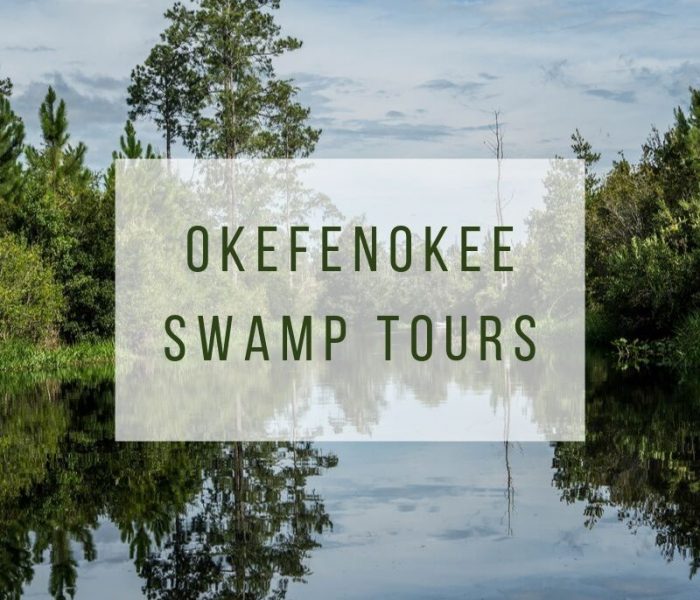
This post may contain affiliate links. If you use them we will earn a small commission but it won't cost you anything extra
When you mention swamp tours, everyone immediately thinks of Everglades NP in southern Florida. However, one doesn’t have to go that far south to spend a day learning about alligators and spotting them. Okefenokee Swamp sits on the border of Georgia and Florida and offers some great opportunities for spotting wildlife.
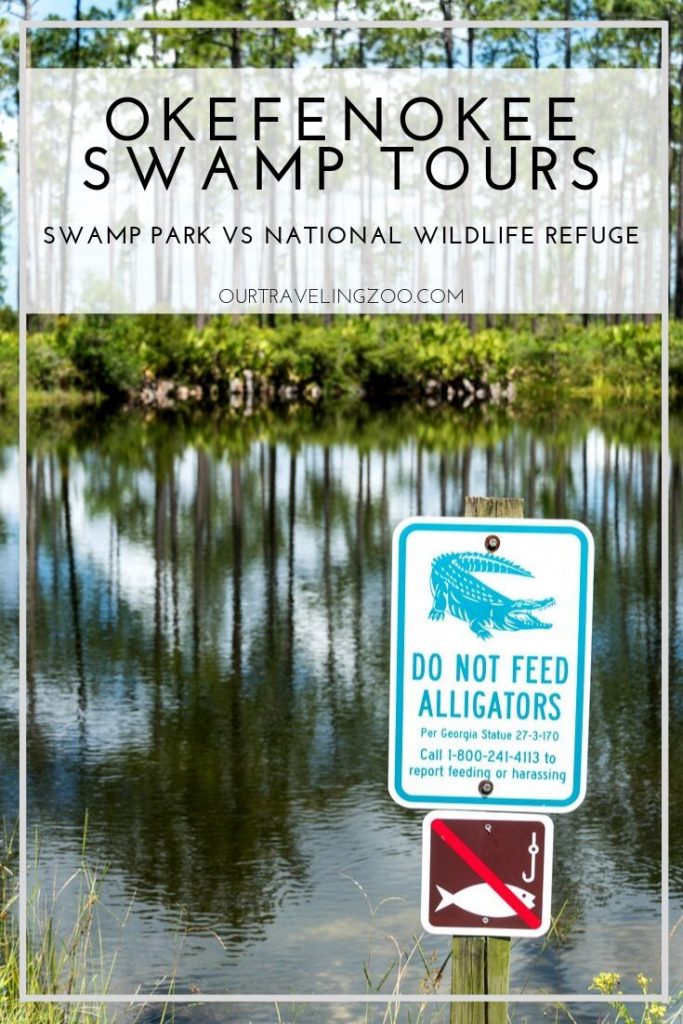
Okefenokee Swamp
At about 700 square miles, Okefenokee Swamp is the largest blackwater swamp in the United States, and a National Natural Landmark. It’s a peat-filled bog so the color of the water resembles the color of strong tea. Most of the area is protected by the Okefenokee National Wildlife Refuge and the Okefenokee Wilderness but there is also a privately run Okefenokee Swamp Park on the northern side.
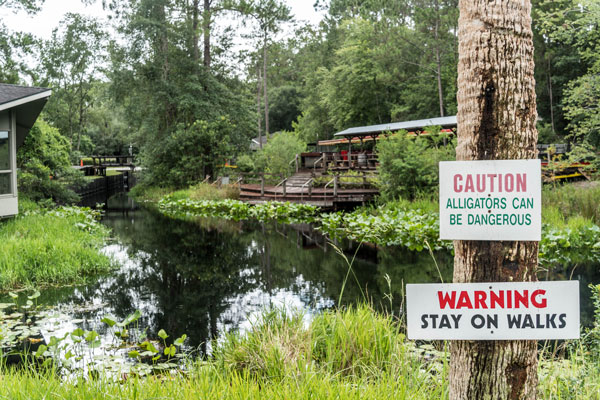
Native American tribes of Deptford, Swift Creek, and Weeden Island Cultures have been living in the area as far back as 2,500 B.C. and there are 74 mounds to prove it. The name itself is of a Native American origin, though points of view on it differ. It’s most commonly said that it comes from the Choctaw word meaning “trembling earth”. However, it may have come from Hatchiti for “water-shaking”.
Which Okefenokee Entrance Do I Need?
There are several entrances to the Swamp – some will say there are 4, some will say 5. Basically speaking, you can access Okefenokee from Folkston, GA, Fargo, GA, and Waycross, GA.
Folkston entrances will take you to the National Wildlife Refuge , Fargo entrances will take you to Stephen C. Foster State Park , and the Waycross entrance will take you to Okefenokee Swamp Park .
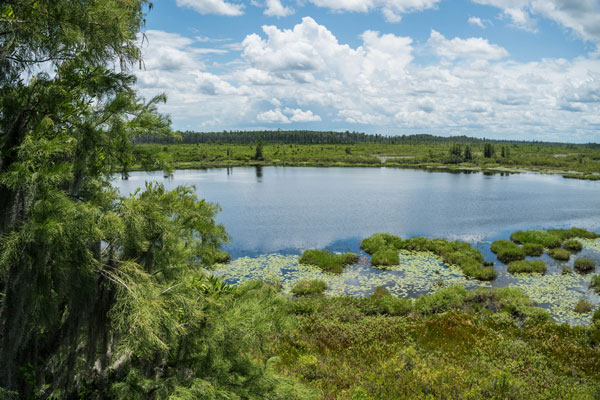
We have done 2 Okefenokee swamp tours on 2 separate trips to the famous swamp and have visited both the Wildlife Refuge and the Swamp Park. We will share our experience and let you make the choice of what will work best for you.
Practical Info
NWR is open daily from 1/2 hour before sunrise until 7.30pm March 1–October 31 or 5.30pm during the rest of the year. The visitors’ center is open 9am to 4pm. Closed on Thanksgiving Day and Christmas Day. Swamp Park is open daily from 9am until 5.30 pm, closed on Thanksgiving Day, Christmas Eve, Christmas Day, and New Year’s Eve. Okefenokee Swamp is a 4.5hr drive from Atlanta, a 2-hour drive from Savannah, an hour’s drive from Jacksonville, and a 3-hour drive from Orlando.
Okefenokee National Wildlife Refuge
Okefenokee NWR was established in 1936. It is home to 233 species of birds, 49 species of mammals, 64 species of reptiles, and 621 species of plants (about a dozen of them carnivorous).
$5 per vehicle buys a daily pass that’s good for 7 days. This gives you access to the Swamp Island Drive , Chesser Island Homestead , and the Boardwalk . There are hiking trails and you can also bring your own canoe or rent ( $32 per solo kayak per day) on the spot and set off exploring the 120 miles of the canoe trails.
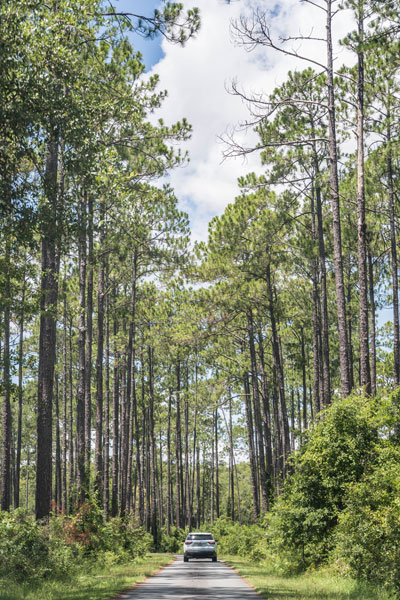
There is a lovely visitor’s center with very friendly and helpful staff and quite a few things for the kids to do. There is also a cafe that serves a variety of sandwiches, salads, and snacks. There were vegetarian options, too! We were happy with ours.
On our trip to the Wildlife Refuge, we did the drive, visited the homestead – the house was locked but the kids discovered a working water pump and had a blast with that, and walked the boardwalk all the way to the Owl Roost Tower in hopes to spot some ‘gators. No such luck! Our oldest was getting rather desperate so upon our return to the main entrance we headed to Okefenokee Adventures who run several different kinds of swamp tours: a 90-minute one, a sunset one, and extended ones geared towards birders and photographers.
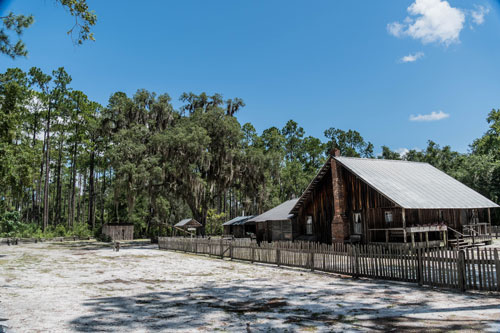
We opted for the 90-minute tour ( $20.25 per adult and $12.75 per kid aged 5-11), donned our life vests, and embarked on the adventure. There were 5 or 6 other people on the boat. Much like on our whale-watching tour , everybody was encouraged to keep their eyes peeled and to call out if they thought they spotted something.
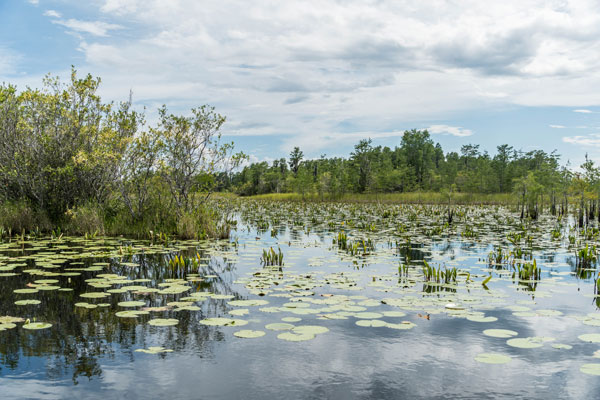
It didn’t take long for us to spot a blue heron, a snake bird, egrets, and turtles. The alligators were a lot more elusive. As our guide kept repeating, there are tons of them around and for each one you see there are several you don’t. Eventually, we all figured out what to look out for, and saw at least 5 gators (one of them huge) before the boat tour was over.
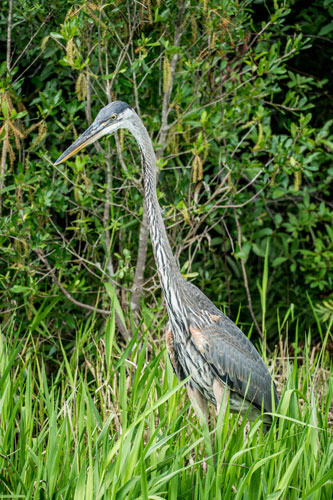
The guide was a fount of knowledge about the Okefenokee Swamp, its wildlife, and the plants in the area. The kids had a blast looking for wildlife, keeping track of what they saw, and measuring the depth of the swamp with an oar.
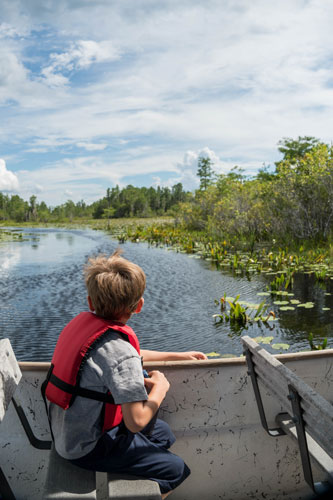
Okefenokee Swamp Park
The Swamp Park is a private non-profit. The admission to the park is $16-17 and includes a ride on Okefenokee Railroad , admittance to “Eye on Nature” educational show, and access to the Boardwalk , Primitive Trail (when accessible), and the exhibit buildings. You can also purchase a boat tour/admission combo ticket for $27 per adult and $22 per child.
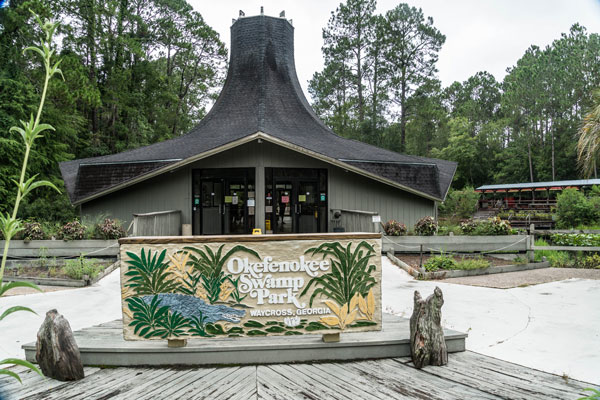
The Swamp Park is significantly busier than the NWR. Unlike the NWR, which now encompasses a lot of wide open space, the Swamp Park was not affected during the West Mims wildfire that ravaged the southern portion of the swamp in 2017. Accordingly, this place looks more like you might imagine. It’s shady, very lush and, of course, swampy. Large cypress trees, Spanish moss, etc.
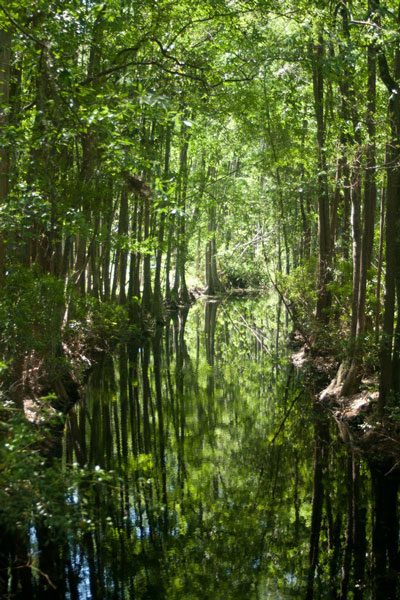
There are boat tours offered which are about the same as the NWR ones but only 45-minute-long, and there are boardwalks and an observation tower as well. There is also a recreated homestead, and the aforementioned train ride. This place is geared a lot more toward entertaining visitors.

The tour guide we had was knowledgable and engaging. As was the case with the NWR guide, this fellow was a Okefenokee-area native. He told us that alligators cannot be tamed, although they can become accustomed to people.
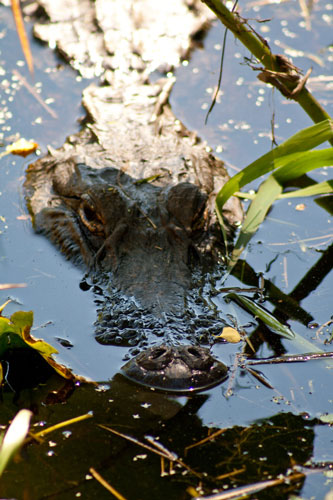
Now, speaking of alligators, this is what we were most excited about seeing. Although we did eventually see a few on our boat tour at the NWR, we saw more at the Swamp Park. In fact, we saw several before we even finished walking across the parking lot to the Park entrance. Inside the park, we lost count of the ones we saw. Thus, we can say the odds of spying an alligator at the Swamp Park are much higher than at the NWR.
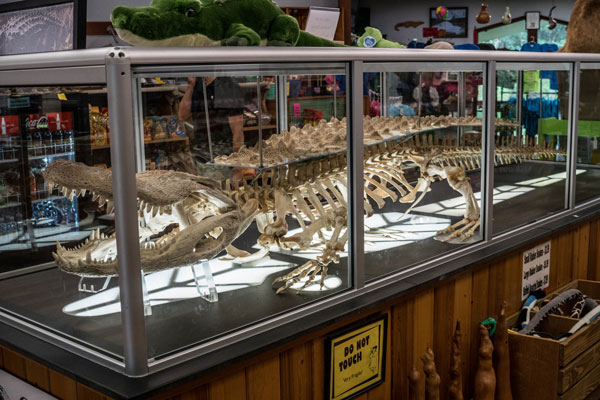
One of the most thrilling moments at the Swamp Park was when a big male started roaring. The sound is almost exactly like a Harley-Davidson V-twin motorcycle that just won’t quite start. Loud, deep, and rumbly. Powerful. Then the big fellow (roughly 8 feet long!) chased a smaller one away from his spot in the canal.
There is a wildlife show here. It is interesting and educational, and it was pretty neat to get the chance to put a baby alligator to sleep. All we had to do was rub it gently at the base of the skull and it drifted right off. A neat trick if you can muster it for your own kids. Sadly we’ve never been able to have it work on ours.
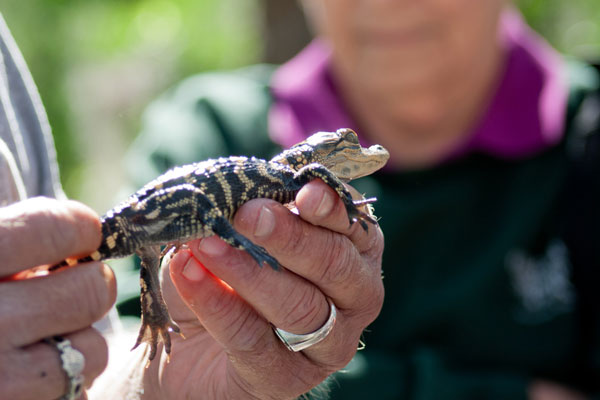
While we did find it interesting, it must be said that wildlife shows are increasingly frowned upon. If you don’t feel comfortable supporting this, then the Swamp Park may not be for you.
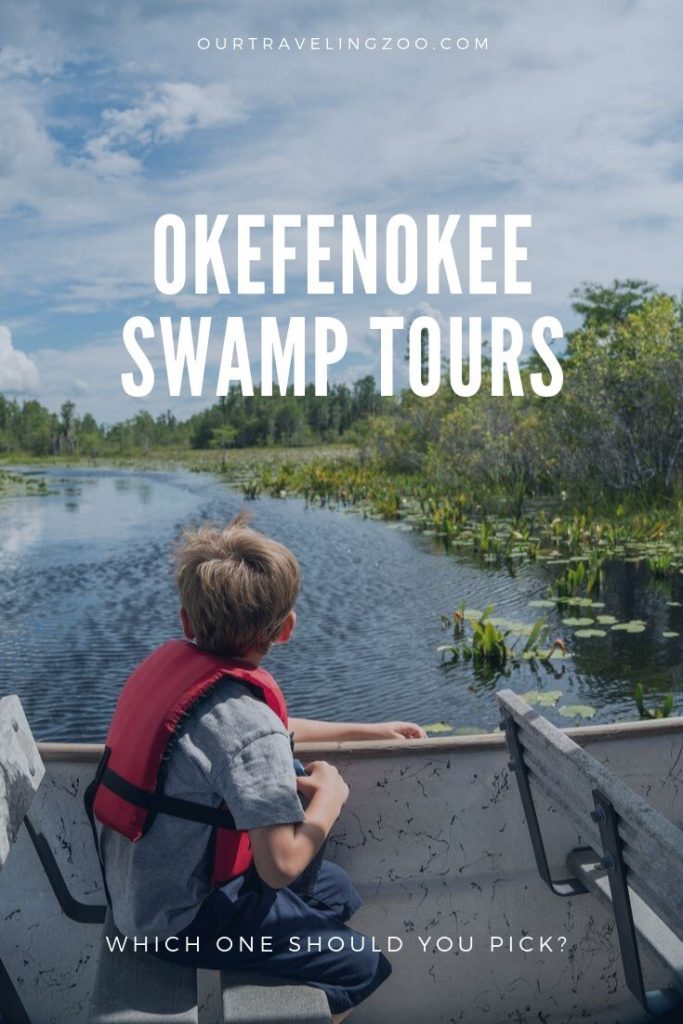
You may also like

Six Things to Do if You Visit Seattle
November 8, 2019
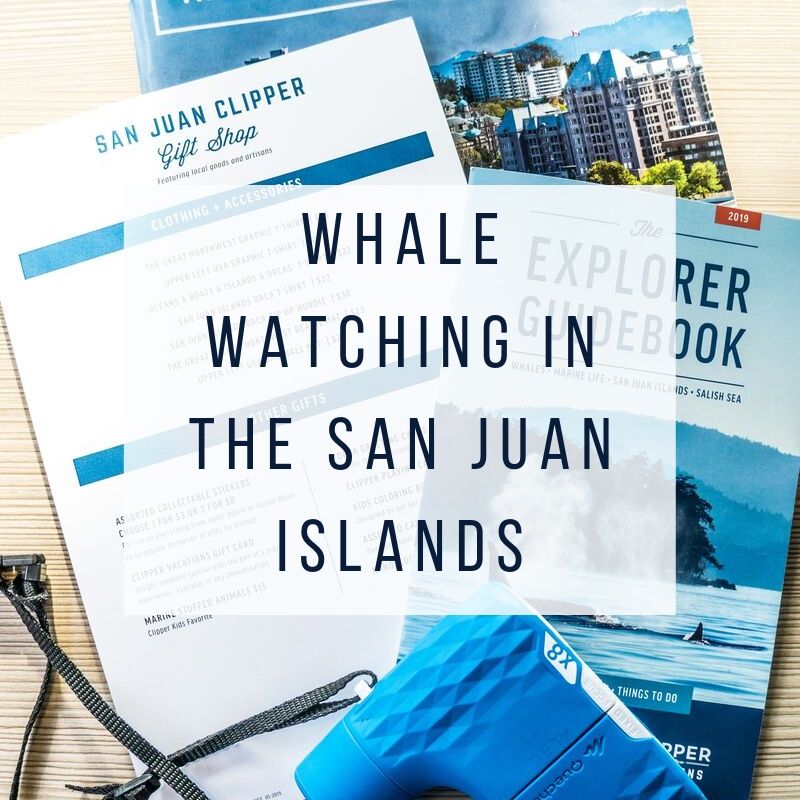
Whale Watching in the San Juan Islands. A Parents’ Guide.
July 21, 2019
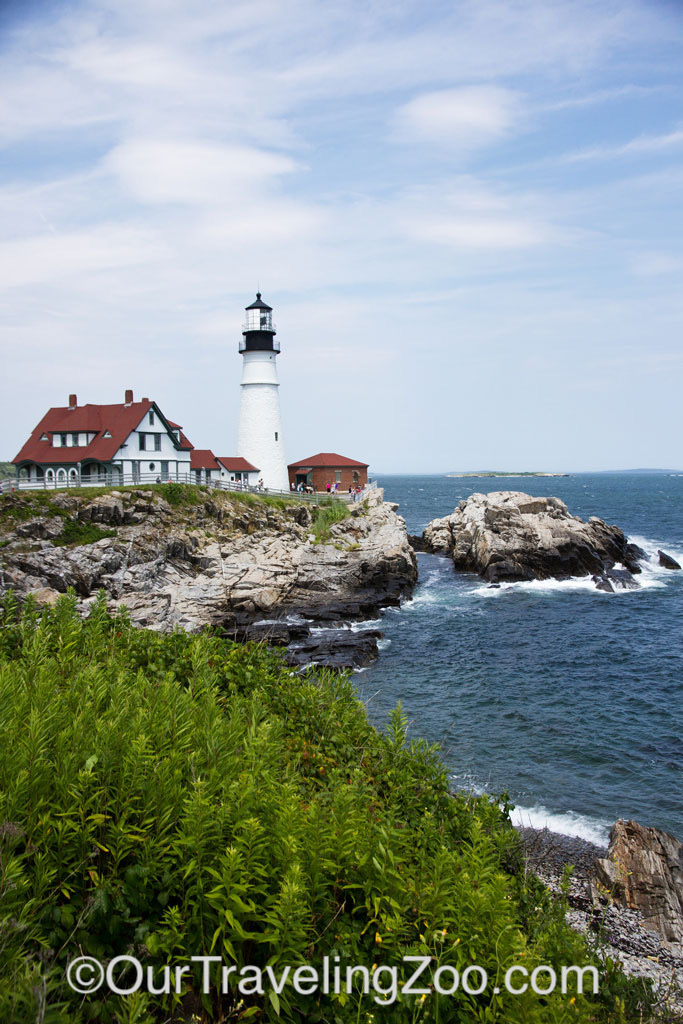
Wednesday Postcard: Portland Head Light
November 28, 2018
We would LOVE this! I like the boardwalk area, a great place to enjoy the scenery and the colors. The baby alligator is so cute!! Adding this to our list when we do a road trip in the area next year. Thanks!
We’re so glad to hear this! Which one sounds better to you? Do let us know if you do get to go 🙂
This is so helpful. Saving this for when I do visit 🙂
Thank you, Merryl, hope you do get to go and enjoy it.
that looks like a fun day out! thanks for the tips! 🙂
This looks like such a fun day! Will definitely be adding this to my list of places to see when I am in the area. Thanks for sharing such an informative account of your trip!
You’re welcome, Maria! It is really a lot of fun and potentially educational, too.
Leave a Reply Cancel reply
Your email address will not be published. Required fields are marked *
Freedom in travel
Three Entrances to the Okefenokee Swamp
As a wrap-up of my recent posts, I want to directly compare the three entrances to the Okefenokee Swamp.
Okefenokee National Wildlife Refuge
First of all, let me say that my enjoyment of the Okefenokee Swamp is one of my biggest travel surprises this year. (And this year includes falling in love with Santa Fe and spending the fall watching the aspen trees turn in Colorado !) I never thought I’d be so entranced with it as I am, or enjoy my time in a swamp so much.
Maybe my expectations were low since I didn’t enjoy my first impromptu visit . It’s possible my visits came at the end of a year full of travel and I’m so tired that the tranquility of the Okefenokee Swamp soothed my soul. Nevertheless, actually getting out into the swamp feels magical. The reflections on the water make it seem like you are floating in the sky! I fell head over heels for the whole experience.

There are three main entrances to visit the Okefenokee National Wildlife Refuge, each with its own boat tour into the swamp. And the boat tours are the thing here. You have to actually get out into the swamp and experience it, not just do the activities on the sidelines.
Note that you need a fair amount of flexibility when visiting the Okefenokee Swamp in general. You certainly can’t do all three entrances in one day. I had a hard time fitting two in one day on my visit, and couldn’t do the third (the state park) until later. And even then, I had a hard time getting a tour time that fit with my schedule. (I ultimately changed my schedule.) Plus, the entrances are about an hour or more from each other – the Okefenokee Swamp is HUGE.

The Okefenokee Swamp invites you to slow down, and I encourage you to lean into this while you’re here. If you want to fully explore what each of the three entrances to Okefenokee Swamp has to offer, I’d reserve one day for each spot.
Ultimately, I recommend visiting all three entrances because the swamp is so different in each place. That way, you get a better picture of the swamp as a whole. (The best way to see the whole swamp is to get a permit to camp and kayak across the entire thing – but I hear those are hard to come by.)
Suwanee Canal Recreation Area/Okefenokee National Wildlife Refuge Main Entrance
If you only have time to visit one entrance to the Okefenokee Swamp, make it the main Suwanee Canal Recreation Area entrance near Folkston, GA. It’s the official federal entrance for the Okefenokee Wildlife Refuge and has the most robust facilities & activities.
The boat tour from the Suwanee Canal entrance features a historic man-made canal and a swamp prairie, and there is a stand of old cypress trees that is absolutely stunning. The swamp here in general is more open for easier viewing of birds and alligators.
Boat tours from this entrance cost $28 and under for a 90-minute guided tour. The boats are shaded, comfortable, and seat a fair amount of people. You must also pay a $5/car fee to enter the refuge, good for seven days.

Other Activities
For just the cost of the $5 refuge fee, you can bike or drive Swamp Island Drive out to the authentic Chesser Island Homestead to see how pioneers lived in the swamp. Next door is a boardwalk out to a 40-foot observation tower. Or you can walk on several short trails in the park, for a little under 5 miles total.

If you want a deeper experience of the Okefenokee Swamp, you can outfit your own trip, or even hire a guided excursion from the Folkston entrance at various price points. Canoes & solo kayaks rent for $45/day.
There are picnic shelters, large bathrooms, a visitor center, a gift shop, and a small cafe here as well.
Nearest Town & Attractions
The biggest drawback to the Suwanee Canal entrance is that there’s not a whole lot to the nearby town of Folkston. There are a few places to eat, but only two small motels to stay in. (Though I did find one very cute bed & breakfast and a caboose that sleeps 4 .) You can instead stay in Kingsland 30 minutes east or Waycross 45 minutes north.
Likewise, there’s not much other activity in Folkston. The biggest attraction seems to be the “ Folkston Funnel “, a railway viewing platform for trainspotting.
Okefenokee Swamp Park
The privately-owned non-profit Okefenokee Swamp Park in Waycross, GA is the oldest entrance and more tourist-trappy than the others, though they’ve put in a lot of effort lately to make it look nicer. And the swamp here is not to be missed! Since this is the most northern entrance, the water level is lower and the paths through the swamp are narrower. It feels like you’re discovering a secret world.

The boats here are smaller jon boats with several benches. They’re stable enough to walk around in, but you probably won’t be standing much during your tour. Based on my first visit, they tend to send out fairly full boats every hour. You don’t see as many birds, but you usually see some alligators and lots of plant life. And this was the only tour where my guide Clint pointed out alligator nests.
The boat tours here cost $30 and under for a 45-minute guided tour, plus the other park attractions like a train and a nature show. That includes the $5 National Refuge fee as well, though I don’t think you can take it with you to use at the other entrances.

Okefenokee Swamp Park definitely has more activities than the other entrances, and to enjoy them without the boat tour costs $20 and under. The biggest attraction besides the boat tour is a narrated mile-long train ride with a stop at a recreated pioneer village. This train becomes the holiday express during the month of December.
There are three small buildings with nature and history exhibits in the park. An “Eye on Nature” show presents live animals throughout the day in the Nature Center. A snack shack is central to the whole park, and a boardwalk with large “ambassador” alligators and turtles is off to one side. Out into the swamp is a long boardwalk leading to a 70-foot observation tower, the tallest in the entire refuge. (Sadly, it’s currently closed.)

One area I didn’t look at too closely at is an azalea garden adjacent to the parking lot, which you might want to check out in the spring. And there is a picnic and event area before the main entrance parking.

Okefenokee Swamp Park might be the most popular entrance to the Okefenokee Swamp, due to its nearness to Waycross, a decently-sized city. Waycross has several hotels, dining, and shopping options and makes a good base for exploring the entire Okefenokee area.
Besides the Okefenokee Swamp Park, Waycross has the Okefenokee Heritage Center and a place called Southern Forest World about forestry in South Georgia. In all, Waycross is THE gateway city to the Okefenokee Swamp.

Stephen C Foster State Park
The third entrance to the park is the most remote, at Stephen C Foster State Park near Fargo, GA. The biggest pro is that you can actually camp here overnight, it’s a dark sky park, and there seems to be even more wildlife here than anywhere.

The boat tours at the Fargo entrance are the cheapest, at $15 for a 90-minute guided tour. The swamp here at the western side of the park is much more open, and the tour sticks to a deeper lake and one smaller canal. It’s just as interesting, but still totally different than at the other two entrances. The $5/car National Wildlife Refuge fee is in effect here as well, though you might have to track down someone to pay it.
The boats are bigger and shaded, but with much less seating than at the Folkston entrance. And with only 2-3 tours per day, it’s a much smaller operation.

Besides 63 campsites, there is a group pioneer campground, nine cottages, and a nearby lodge for rent. There are about three miles of hiking trails, about four miles of biking if you include all the paved roads, and you can drive or bike 5.5 miles to the nearby Suwanee River Sill. The park office has a gift shop and trading post for some food supplies. And there are three rentable picnic shelters and a playground.
You can rent kayaks and canoes here for relatively cheap – between $15-$30 for up to eight hours. Paddle a kayak two miles to Billy’s Island and then hike a one-mile loop to see Native American, pioneer, and logging history on the island.

Nearest Town & Activites
There really isn’t much to Fargo at all – only one hotel with just eight rooms and a few restaurants. There are a couple of golf courses nearby, including one across from the park-operated Eco Lodge. You’re better off staying in the park itself or in Waycross an hour north.
Minor Entrances to Okefenokee Swamp
There are two more minor entrances to the swamp. I cover the Suwanee River Sill in my post about the Stephen C Foster State Park . And there’s one more entrance called Kingfisher Landing that’s pretty much just a boat ramp and some restrooms. It’s located on the east side between the Waycross and the Folkston entrances.

Final Thoughts
Getting out into the Okefenokee Swamp is what you want to do at each of these locations. To that end, make sure you always book your boat tours ahead of time and plan the rest of your day around them. The parks themselves are nice, but nothing compares to getting out on the water. I did tours at all three entrances, enjoyed each one, and would do all of them again in a heartbeat! Links for booking tours can be found on my blog posts for each park.
And one thing I haven’t mentioned in all of these posts is that for most of the year, the Okefenokee Swamp is going to be very hot and buggy! My visits have all been in the fall & winter so I haven’t had that experience – which makes this area a fantastic place to visit during the colder months. But be prepared for hot & humid weather the rest of the year. And take your strongest bug spray! Mosquitos, flies, and other bugs live in the swamp all summer and biting yellow flies are most prevalent in May & June. Wear long sleeves, hats, pants, and douse yourself with spray if you go during these months. Those biting flies can really ruin your day.

The Okefenokee Swamp has a lot more to offer than might be assumed at first glance. If you’re feeling harried and enjoy the outdoors, I would absolutely recommend some time in south Georgia checking out all three entrances to the Okefenokee National Wildlife Refuge.
Share this:
- Click to share on Facebook (Opens in new window)
- Click to share on Twitter (Opens in new window)
- Click to share on Pinterest (Opens in new window)
- Click to email a link to a friend (Opens in new window)
- Click to print (Opens in new window)
Did you like that post? Sign up for my email newsletter to get occasional updates, or comment below and check the box to be emailed every time I post content.
Your Name (required)
Your Email (required)
Categories Georgia
Tags Georgia Hiking National Parks Okefenokee Swamp
We live in a wonderful world that is full of beauty, charm, and adventure. There is no end to the adventures we can have if only we seek them with our eyes open. – Jawaharlal Nehru
12 Comments
Beautiful pictures very informative. Thanks
Thank you so much!
Totally the best article on Okefenokee Swamp I’ve ever read!
Great article.The swamp is truly a must see.
I’m planning atria for 2023 so your post was very timely and useful for future planning. Thank you.
This is exactly the information I have been looking for. Thank you
I wish I could you back to the early 1960s where you hired a boat and guide. Last time I visited, the guided tour was very small and didn’t include anything I remember as a kid. As a kid, you could take a 4 hour to about 8 hours guided tour. You told the guide what you most wanted to see and they personalized your tour. I was so young and didn’t understand or appreciate what all we saw. However, the memories created are some alltime favorites of my life.
That’s amazing! That would have been pretty cool to see it that way.
Thank you for writing this. We’re going back, this time with extended family, and I had NO idea which one to choose! We LOVED the prairie and canal at Folkston but the younger kids may really dig the train ride at Waycross.
I’m so glad it was helpful!
You made it to the end! (Hint: I love comments) Cancel reply
- Skip to primary navigation
- Skip to main content
- Skip to primary sidebar
- Skip to footer
TravelAwaits
Our mission is to serve the 50+ traveler who's ready to cross a few items off their bucket list.
How To Explore Okefenokee Swamp

MilesbeforeIsleep / Shutterstock
- Activities and Interests
- Destinations
- Guided Tours
- Outdoor Activities
- Types of Travel
- United States
Located in Waycross, Georgia, at the headwaters of the Suwannee and St. Marys Rivers, Okefenokee Swamp Park is an impressive National Wildlife Refuge — a vast collection of islands, lakes, jungles, forests, and prairies on the Florida-Georgia line.
The Okefenokee Swamp National Wildlife Refuge stemmed from a non-profit corporation which was eventually chartered as the Okefenokee Association Inc., under the laws of Georgia. The Okefenokee Swamp Park opened its doors officially on October 8, 1946. Nearly a quarter of a million dollars was poured into this very unique community project, which the Okefenokee Swamp National Wildlife Refuge calls “the most unique community project on record.” The end goal of the project was to make the park “one of the most appealing tourist attractions in America” and they managed to do exactly that.
At nearly half a million acres, visitors to Okefenokee Swamp can participate in interpretive exhibits, wildlife shows, boat tours on Indian Waterways, and visits to Pioneer Island, all while observing animals in their natural habitats.
Here are nine ways you can explore Okefenokee Swamp Park.

N. Riley / Shutterstock
1. Adventure Walk To Observation Tower
Traveling along Okefenokee’s newest pathway, New Low Walkway, visitors will enjoy the half-mile journey on the park’s original boardwalk, initially lost in the 2007 Big Turnaround Fire. You’ll get to see the swamp’s vast ecosystem up close from the boardwalk, which is located directly on top of the swamp. New Low Walkway will lead you to the 90-foot observation tower, which will afford you a bird’s eye view of the wetlands below.
If you’re planning to visit Okefenokee Swamp soon, you should head to the attraction’s website to take a close look at the warning notice and guidelines . The liability forms necessary for anyone planning to take to the boardwalk are accessible there as well.
2. Guided Boat Tours
Hop on one of Okefenokee Swamp Park’s guided boat tours to get up close and personal with the swamp’s native plants and wildlife. Don’t worry: This guided boat tour will also give you the chance to climb the 90-foot observation tower for a panoramic view of the swamp.
Prices range from $22 to $27 for a 45-minute limited boat excursion. Group tours are also available, and allow you to experience the guided swamp boat tour with friends and family at a discounted rate. The size of your group will determine the time allotted for your tour. To participate in a group tour, you must have 12 or more people, with one person paying. Reservations are required for 20- and 45-minute group excursions.
Keep in mind that all boat tours depend on the swamp’s water levels. There are no refunds due to weather conditions. Availability of group tour boats is subject to change without notice.
3. Cypress Cove Annex
Okefenokee Swamp is the perfect place for hosting any large event. The Cypress Cove is a venue at Okefenokee Swamp where large private events can be held. Family reunions, birthday parties, and holiday parties are just some of the events that can be held at Cypress Cove — and the list goes on!
The venue can comfortably seat 200 guests within a climate-controlled environment. Cypress Cove includes a fully equipped kitchen with an outdoor cooking area for grilling. Rental fees are based on the day of the week and time of day you plan to host your event: $200 Monday through Thursday and $250 for Friday, Saturday, or Sunday.
Daytime business meetings of five hours or less Monday through Thursday are $125. For all other events, you’ll pay the full day rate of $200. Reservations for the venue can be made up to twelve months in advance.
A bonus to this unique venue is that parking is free of charge and guests can enjoy tours of the park grounds at a discounted rate!

4. Georgia’s Natural Wonder: Plants And Animals
The Okefenokee Swamp is home to a variety of wildlife and in many ways is a true wildlife refuge. The wildlife seen in the swamp are seen their natural habitats and all inhabitants are protected by law. This Southeastern swamp is unique in being one of the few places in America that offers such a wide variety of wildlife, including 34 types of fish, 40 mammal species, 60 amphibian species, and 50 reptile species.
Beyond wildlife, the swamp is home to several natural wonder plants as well. These plants are special because unlike plants eaten by animals, they eat the animals . The Okefenokee Swamp has a variety of carnivorous plants that are a great interest to many who witness them. Carnivorous plants that thrive in the swamp include the pitcher plant or fly catcher, bladderwort, and sundew.
Taking some time to view and gain more knowledge about these natural wonders will enliven your Okefenokee Swamp experience.
5. Natural Wonder Special Programs
Okefenokee Swamp is famous for its alligators, cypress trees, and incredible history. The swamp is even recognized by the United Nations as a wetland of international importance because of its wildlife diversity. You can learn all about the swamp’s wildlife with these two special programs.
“Eye on Nature” is an educational offering for all ages. You will learn all about the animals that live in the Okefenokee swamp during this 20 to 25 minute presentation, which can be viewed all year round.
“Can I See?” gives visitors the opportunity to check out a variety of wildlife from several observation areas. Don’t forget your camera! You’ll get some great shots of the park’s animal denizens, such as otters, black bears, and alligators!

6. Seasonal Light Show
Take a train ride through the park and enjoy a fabulous display of lights during the Christmas season! Listen to your favorite Christmas tunes throughout the trip and tour the park exhibits afterward! Santa can even be spotted during certain times of day during the light show — making Okefenokee Swamp the perfect place to take the kids or grandchildren to tell Santa their Christmas lists. Check out more details and a full schedule .
7. Pogo Possum Exhibit
Pogo Possum was created in 1943 by none other than the witty and brilliant Walt Kelly himself. After Kelly’s six-year career with Disney Studios, he returned home and began illustrating a series of comic books which featured a “furred and feathered” bunch of creatures who lived in the Okefenokee Swamp. Pogo made an appearance in approximately 500 papers and 14 countries and a whopping number (nearly 300 million copies) of books centered around Pogo and his swamp friends have been sold since he debuted.
After Kelly’s death, his widow, Selby, continued the comic strip, but it was finally discontinued after 26 years in 1975. In 1987, the City of Waycross was granted permission to adopt Pogo as their goodwill ambassador. The city brought Pogo home to Okefenokee, where you can now visit the Pogo Exhibit. In January of 1989 Pogo made a full return with effort from the New York Times and the Kelly family. The Okefenokee exhibit features Pogo and his “swamp critter friends” roaming around serving up playful jokes about the social and political highs and lows of the 1980s.
8. Board The Swamp Train
All aboard the Swamp Train ! Visitors can hop aboard the The Lady Suwannee, a 36-gauge replica steam engine built by Cummings Locomotive, and feel like they’re traveling back in time.
The Lady Suwanee’s track was installed by B.R. Moore Construction Company and completed in the winter of 1999. The railroad track began giving out tours of the swamp in the spring of 1999.
The 1.5-mile railroad system at the Okefenokee Swamp Park serves as a mode of transportation for the visitors, circling part of the Okefenokee Swamp. Those who hitch a ride will enjoy a stop at Pioneer Island, where they can experience exhibits focused on early American history.
9. Visit Oscar The Alligator’s Skeleton
In 2007, one of Okefenokee’s longest-standing residents passed away. Oscar the alligator was a 100-year-old gator who once resided in the Okefenokee Swamp. Oscar was described as being a dominant male, but a very docile creature. Unlike most alligators, Oscar was not known to show aggression. Due to his overprotective nature, his only issues came about when other males tried to intrude on his territory or his many girlfriends.
Put back together bone by bone by Don Berryhill and Jim Brewer, Okefenokee now features an educational exhibit that showcases Oscar’s full-scale skeletal structure. This informative exhibit is a testament to Oscar’s century of life, and the extraordinary anatomy of the great American alligator. Soon, guests who visit Okefenokee Swamp Park will have the opportunity to see hundreds of Oscar’s offspring roaming the park waters — a less morbid but more dangerous legacy.
Okefenokee Swamp Park is a beautiful destination that the whole family can enjoy. The park has become one of the most well-known wilderness areas in the United States, featured in many Hollywood movies and TV shows. At Okefenokee Park, you can immerse yourself in the history of the continent — from the legacy of Native Americans who hunted and fished here to the European settlers who came to call the swamp home.
If you’re planning a visit to the beautiful Okefenokee Swamp Park, be sure to check out admission prices and camping and hotel accommodations in Waycross, Georgia.
Road tripping through the South? Don’t miss these 15 hidden gems in Savannah, Georgia, or some of the best places to eat before you head south to the swamp.
*Updated by Traneah Ford June 2019.
Photo Credit: MilesbeforeIsleep / Shutterstock
Photo Credit: Stacy Funderburke / Shutterstock

- Share full article
Advertisement
Supported by
Guest Essay
A Dire Threat to a National Wildlife Treasure

By Margaret Renkl
Ms. Renkl is a contributing Opinion writer who covers flora, fauna, politics and culture in the American South.
One of the hardest things to reconcile about living in the American South is how this region of extraordinary natural beauty, this still wild place of irreplaceable biodiversity, is mostly in the hands of politicians who will gladly sell it to the highest bidder. It’s hard to reconcile how even land that’s ostensibly protected is never truly safe . And how state regulators charged with protecting it will often look the other way when the highest bidder violates the state’s own environmental regulations .
An egregious example of this pattern is unfolding in Georgia, where state officials are poised to approve a strip mine on the southeastern edge of the magnificent Okefenokee National Wildlife Refuge .
At 407,000 acres, the Okefenokee is the largest ecologically intact blackwater swamp in North America and the largest National Wildlife Refuge east of the Mississippi River. It hosts or shelters a huge range of plant and animal life , including endangered and threatened species. It is a crucial way station for migratory birds. Designated a wetland of international importance under the RAMSAR Convention of 1971, it sequesters an immense amount of carbon in the form of peat .
The proposed mine poses a profound risk to the swamp. Trail Ridge, the site where Twin Pines Minerals will begin operations, is a geological formation that functions as a low earthen dam holding the waters of the Okefenokee in place. The mine would remove the topsoil, dig out the sand pits, separate the titanium from the sand and then return sand and soil to some approximation of their original place. To manage all this, Twin Pines would need to pump 1.4 million gallons of groundwater a day from the aquifer that serves the Okefenokee.
It doesn’t sound too bad, I guess, unless you know that this destroy-extract-replace plan is effectively mountaintop-removal mining transferred to the watery lowlands. There is no restoring an ecosystem after an assault like that. Aquatic plants and animals die off if waterways become clogged with silt. Drinking water can be contaminated by heavy metals. Ancient land formations and the habitats they underpin are lost forever. The living soil is left barren.
As a species, we have never let ecological necessity get in the way of something we think we need from the land. Thing is, we don’t need this mine. Titanium dioxide is used primarily as pigment in a range of products, including paint and toothpaste. It is not difficult to find in less environmentally sensitive areas.
Twin Pines, an Alabama company, claims that its proposed mine would bring hundreds of much-needed jobs to an economically depressed part of the state. It does not say how much income would be lost if the mine depresses tourism to this ethereal place, which each year attracts more than 800,000 visitors who spend some $91.5 million while they’re there. Okefenokee tourism “supports 750 jobs, $79 million in economic output and $11.1 million in annual tax revenue in the area,” notes an analysis by The Conservation Fund .
Even by a purely human measure, in other words, there is no compelling reason for Georgia to allow mining on a fragile ridge of land less than three miles from the Okefenokee Swamp.
By environmental measures, of course, setting up a strip mine anywhere near this wildlife sanctuary should be flat-out illegal. Arguably, it already is. Hydrologists at the National Park Service last year found “ critical shortcomings ” in the model Twin Pines used to demonstrate the safety of its plan — a model that “obfuscates the true impacts from mining on the refuge.”
It’s important to note that this is not a battle between the people of Georgia and some out-of-state environmental organizations that don’t understand the dynamics of rural poverty. The people of Georgia treasure the Okefenokee. When I wrote about this risk to the swamp last year, the first period of public comment was coming to a close, and sentiment was already clear: 69 percent of Georgians supported permanently protecting the swamp from development, and Georgia’s Environmental Protection Division received more than 200,000 public responses opposing the mine .
What the people of Georgia know — which Georgia environmental regulators refuse to acknowledge — is that we should react as fiercely to the idea of a mine on the edge of the Okefenokee as we would to “any action that jeopardizes the integrity of something like Yellowstone or Yosemite or the Grand Canyon,” Bill Sapp, a senior attorney with the Southern Environmental Law Center, told Brady Dennis of The Washington Post . Instead of handing it over to some out-of-state company to profit from, Georgia officials ought to be protecting this swamp with every tool they have at hand.
Nevertheless, on Feb. 9, just days after I wrote an essay about the danger to American wetlands in general and to the Okefenokee in particular, Georgia’s Environmental Protection Division — don’t even get me started on the irony — issued draft permits for the mine.
Here’s another irony for you, courtesy of reporting by The Associated Press’s Russ Bynum : “The draft permits were released barely two weeks after Twin Pines agreed to pay a $20,000 fine ordered by Georgia regulators, who said the company violated state laws while collecting soil samples for its permit application.” To put this sequence of events another way, Georgia’s Environmental Protection Division gave the company a slap on the wrist and then threw it a parade.
How is it even possible that state regulators are on the cusp of approving an unnecessary mine on the boundary of a desperately needed federal wildlife sanctuary? A mine that the state’s own citizens, along with a bipartisan majority of its lawmakers, so vehemently oppose? In a comprehensive report for The Atlanta Journal-Constitution , Drew Kann lays out the role that lobbying efforts and campaign donations — and a devastating rollback of environmental protections during Donald Trump’s presidency — have played in leaving the Okefenokee so vulnerable.
When Georgia regulators issued the draft permits for the mine, they also allowed 60 days for the public to comment. After April 9, the final permits could be issued, and Twin Pines could begin operations. In the meantime, efforts to defeat the mine have shifted into an even higher gear .
The National Park Service has nominated the Okefenokee refuge as a UNESCO World Heritage site , a distinction that, if granted, would bring additional visitors to the area — and additional scrutiny to Georgia’s management of the swamp.
Officials at the U.S. Fish and Wildlife Service have informed Georgia regulators that the agency is formally asserting federal rights over waters that affect the Okefenokee. “Disruption to the natural flow of groundwater in this interconnected system could have far-reaching consequences for both the refuge and surrounding areas,” wrote Mike Oetker, the acting Southeast regional director of the agency.
A new bill before the Georgia House of Representatives — which the Georgia Conservancy supports — would call a moratorium on new permit applications for mineral mines using the method that Twin Pines plans to use at Trail Ridge. If passed by the House and Senate and signed by Gov. Brian Kemp of Georgia before the end of the legislative session on March 28, the new bill would effectively turn the first phase of the Twin Pines mine into a pilot site, preventing the company from expanding mining operations until scientists have had time to gather data and assess the mine’s impact on the swamp. The House is set to vote on Tuesday.
In a virtual public meeting attended by hundreds of people this month, commenters spoke for three hours in defense of the swamp. (No one spoke in favor of the mine.) “There’s just no sense in risking the national wildlife refuge just to make rich people richer by mining for an extremely nonessential mineral,” one local resident said.
There’s no sense in it at all. To build a mine on the edge of the Okefenokee would be to rob nearby Georgians of safe drinking water, to rob our wild neighbors of one of the few truly wild places we have left and to rob the world of an ecological treasure. The Okefenokee does not belong to Georgia. It belongs to the planet. It belongs to us. And we should all do everything in our power to save it.
To comment on the proposed mine by April 9, email [email protected] or send a letter to the Land Protection Branch, 4244 International Parkway, Atlanta Tradeport Suite 104, Atlanta, GA 30354. It is not necessary to live in Georgia to comment.
Margaret Renkl , a contributing Opinion writer, is the author of the books “ The Comfort of Crows: A Backyard Year, ” “ Graceland, at Last ” and “ Late Migrations .”
The Times is committed to publishing a diversity of letters to the editor. We’d like to hear what you think about this or any of our articles. Here are some tips . And here’s our email: [email protected] .
Follow the New York Times Opinion section on Facebook , Instagram , TikTok , WhatsApp , X and Threads .
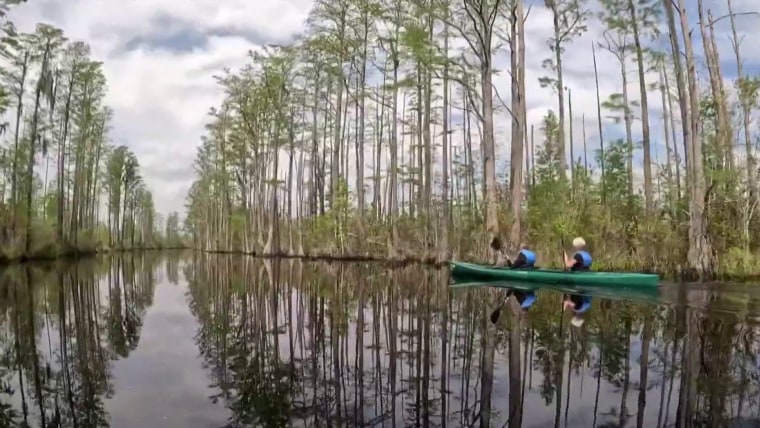
Environmentalists warn of threat to famed Okefenokee Swamp

Hospital staff save woman and her baby, then organize her surprise wedding

Hundreds of passengers bypassed a part of airport security screenings

Towns along solar eclipse path brace for millions of tourists

Aftershocks felt on East Coast as concerns mount over NYC’s structural readiness for earthquakes

Miami-area shooting leaves 9 shot with 2 dead

Can artificial intelligence help people with their mental health?

Family members of Gaza hostages speak out almost 6 months after terrorist attack

Anticipation of total eclipse creates boom towns in its path

Israel's military dismisses 2 senior officers over killing of Gaza aid workers

Magnitude 4.8 earthquake rattles East Coast

Violent weather causes severe airline turbulence

Lawyer says NFL star Rashee Rice was driving car involved in Dallas crash

Desperate search for trapped earthquake victims in Taiwan

Stronger marijuana linked to more psychosis in teens

Election workers face growing security threats

Biden takes tougher tone in phone call with Israel's Netanyahu

Brothers half a world apart start Gaza soup kitchen to feed those caught in war

Seven women sue Tennessee after being denied medical exemption under state's abortion ban

Growing outrage after deadly Israeli strike on aid workers
Nightly news.
Environmentalists warned that a mine proposed to be built near the Okefenokee National Wildlife Refuge could damage the swamp’s fragile ecosystem. Supporters argue the mine will invigorate the local economy without impacting the swamp. NBC News’ Priya Sridhar reports. (Correction: An earlier version of this piece mischaracterized part of Twin Pines Minerals’ statement. The company says no mining activity will be conducted below the highest water levels of the Okefenokee. This video has been updated.) April 6, 2024
Best of NBC News

Biden is working to prevent escalation in Iran, Sen. Schumer says

Earthquake and solar eclipse face off on ‘SNL’

Nightly News Netcast
Nightly news full broadcast (april 6th).

Justice & Health
Mining fight on the okefenokee swamp’s edge may have only just begun, legislation to protect critical wetlands faces uncertainty as titanium mine moves closer to permitting., share this article.

Tribes Meeting With Inter-American Commission on Human Rights Describe Harms Uranium Mining Has Had on Them, and the Threats New Mines Pose

Aridity Could Dry Up Southwestern Mine Proposals

EPA and Alabama Power to Start Settlement Negotiations Over Coal Ash Storage near Mobile

This article originally appeared in The Atlanta Journal-Constitution . It is republished with permission.
FOLKSTON—As the sun peaked through trees draped in Spanish moss on a March afternoon, Michael Lusk steered a boat into the Okefenokee Swamp wilderness.
Across a flooded prairie, great egrets searched for fish among the lily pads and an American alligator sunned itself on a floating bed of peat.
“This is what a wetland is supposed to look like on a massive scale,” said Lusk, who manages the refuge for the U.S. Fish and Wildlife Service (FWS).
But a threat looms to one of the world’s largest blackwater wetlands, environmentalists say. For five years, an Alabama company has tried to develop a nearly 600-acre mine on Trail Ridge, the ancient sand dunes that form the eastern boundary of the swamp. Last month, despite opposition from the federal government, the Georgia Environmental Protection Division (EPD) released draft permits for the mine, bringing the project closer to becoming reality.

Proponents of the mine say it could inject jobs and investment into a poor rural county starving for both. The mining company, Twin Pines Minerals, says its analyses show the mine will not lower water levels in the swamp or harm its wildlife. EPD’s own experts have mostly agreed.
But outside scientists, including hydrologists from the University of Georgia and FWS, say the company has failed to prove it won’t harm the ecosystem. Critics contend the mine could wreak ecological devastation and open the door for thousands more acres to be mined.
The fight against the mine is at a critical moment.
The public comment period on the draft permits closes April 9. And with only two days left in the legislative session, odds of a bill passing that would halt Twin Pines’ expansion plans are slim.
Legislation to protect the ridge the company wants to mine has been bottled up in committee, while Twin Pines—aided by about a dozen lobbyists and more than $100,000 in campaign donations since 2018—has proven savvy in navigating the Gold Dome.

One proposal that would temporarily prevent the mine from expanding beyond its current footprint got a boost Thursday when it cleared a key House committee.
Still, some who live near the refuge—along with visitors and environmentalists from around the world—see an existential threat inching closer to a place the Biden administration wants to nominate as a World Heritage Site, joining the ranks of Yellowstone and the Great Barrier Reef.
Lusk says he recognizes the economic draw, but argues they must be weighed against the potential harm to the ecological gem in their backyard.
“The question is what are we risking in order to help an Alabama mining company?” he said.
Federal Regulators Sidelined
For most of the five-plus decades since the federal Clean Water Act was passed, projects that disturb protected wetlands and other “waters of the United States” have required approval from either the U.S. Army Corps of Engineers or the Environmental Protection Agency (EPA).
Initially, Twin Pines did too.
We’re hiring!
Please take a look at the new openings in our newsroom.
But through a mix of luck and deft maneuvering, the planned mine has largely avoided the federal government’s gaze.
Back in 2020, then-President Donald Trump’s EPA finalized changes that removed protections from many wetlands. That rule was later vacated by two district courts, before safeguards were reinstated by President Joe Biden’s administration.
While weaker Trump-era rules were in effect, the Army Corps determined it did not have jurisdiction over the Twin Pines mine. The Corps tried to reclaim control in 2022, saying it did not consult with the Muscogee (Creek) Nation—a tribe with historical and cultural ties to the swamp—before forfeiting oversight. But Twin Pines sued and a few months later, the parties settled, with the Corps agreeing to stay on the sidelines.
That left vetting of the project in the hands of Georgia EPD.
Though Twin Pines didn’t have a business presence in Georgia before 2019, it’s amassed an army of lobbyists and has made strategic contributions to Gov. Brian Kemp and other key leaders. State filing records show Twin Pines and its president, Steve Ingle, have donated a combined $102,700 to Georgia candidates, elected officials and political action committees since 2018.

These aerial photographs taken from a drone show part of the Twin Pines mine site where equipment has been stationed in Charlton County. The site is less than 3 miles from the Okefenokee National Wildlife Refuge, the largest swath of federally protected land east of the Mississippi. Credit: Hyosub Shin/The Atlanta Journal-Constitution
A lobbyist for Twin Pines is also married to Trey Kilpatrick, who until recently was Kemp’s chief of staff.
A spokesman for Kemp referred a request for comment on the mine to Georgia EPD and said they do not comment on pending legislation.
Though it has denied wrongdoing, Twin Pines has also been fined $20,000 by EPD for drilling soil samples without a professional geologist on site, or posting the necessary bond to do the work. Both are violations of state law.
Opponents of the mine at the State Capitol have filed one bill, HB 71, that would not block Twin Pines’ current proposal, but would prevent mining expansion on the Okefenokee’s eastern flank. The bill has support from environmentalists and more than 90 House members, but it has been stuck in a House committee without a vote.
Critics say Twin Pines’ political donations are behind the impasse.
“Instead of selling out our greatest natural treasure to an Alabama company with an atrocious track record, Gov. Kemp and Speaker Burns ought to follow the science, the law, and the will of the public and protect the Okefenokee now and for future generations,” said Josh Marks, an Atlanta attorney and president of Georgians for the Okefenokee.
Steve Ingle, president of Twin Pines, said its donations were transparent and said attention should be on the mine’s opponents’ spending, who he said are running a “non-fact-based campaign.”
‘Critical Shortcomings’
Twin Pines plans to use a bucket controlled by a crane-mounted pulley system to extract titanium sands, a method known as “dragline mining.” Its 500-foot wide by 100-foot long mining pit will move 100 to 200 feet a day across the site, with the company backfilling with sediment as they go.
If finalized, the company’s groundwater permit will allow it to pump nearly 1.5 million gallons a day from the vast Floridan aquifer, which lies beneath south Georgia, Florida and other states. With water and other electromagnetic processes, Twin Pines will separate the titanium-rich minerals it wants from scrap sand. The end product is titanium dioxide, a whitening pigment used in toothpaste, paint and more.
But the mine pit will also impact a shallower aquifer just below the surface. As water seeps into the pit, the company will have to pump water constantly to a series of storage ponds to keep the pit dry.
Without a wastewater permit, the mine will not be allowed to discharge any of it from the site. Instead, it plans to run massive evaporators to send used water into the air as steam.
That pumping and seepage are big concerns to scientists like Rhett Jackson, a professor of hydrology at UGA.
The Okefenokee is known for its black waters, but the swamp is very shallow—just 1 to 3 feet deep in most places—and an estimated 75% of its supply comes from rainfall.
Experts say both factors make the refuge vulnerable to drought and in turn, fire.
Fires have always occurred in the Okefenokee and help cycle nutrients through the ecosystem, but several large blazes have torn through the swamp in recent years, often spilling into commercial timberlands.
The largest this century was in 2007 when fire scorched 560,000 acres, including 135,000 acres of privately-owned forest. According to FWS, the fire cost $100 million, not including the estimated $113 million in timber that was lost. Devastating wildfires followed in 2011 and 2017.
Fires in the Okefenokee have global significance, too, allowing vast sums of carbon trapped in the swamp’s peat deposits to burn and sending heat-trapping gases into the atmosphere.

Jackson has analyzed Twin Pines’ plans and estimates they could triple the frequency of drought and wildfires in parts of the swamp near the mine.
“It’s super drought-sensitive and the amount of water they plan to use is going to have a significant effect,” Jackson said.
Hydrologists at the National Park Service (NPS) have also identified ‘critical shortcomings’ in Twin Pines’ modeling, arguing the company’s analysis “obfuscates the true impacts from mining on the refuge.”
Twin Pines’ has hired Sorab Panday, a hydrology expert who worked on Georgia’s winning “water wars” case with the state of Florida, to evaluate the mine’s impacts. In a memo last fall, Panday dismissed Jackson’s claims, writing that the mine’s water demands are a “drop in the bucket.” EPD’s own experts say they agree with the company.
“We will take Dr. Panday’s side in a debate with our opponents any day of the week,” Lewis Jones, an attorney representing Twin Pines, said in a statement.

Concerns about the mine’s water impacts extend beyond the Okefenokee, too.
The swamp is also the headwaters of two rivers. The Suwannee River forms at its western edge, and the St. Marys River exits the southeastern corner, before winding its way to the Atlantic Ocean.
Like the Okefenokee, the St. Marys is a dynamic ecosystem. After heavy rains, water levels surge and spill into its floodplain. During droughts, the river shrinks dramatically.
EPD says the mine’s water use won’t significantly reduce flows in the St. Marys. But Emily Floore, the executive director of St. Marys Riverkeeper worries the mine will harm wildlife in its black waters, like a distinct population of endangered Atlantic sturgeon found in the river.
“If you’re constantly taking (water), how can you say there’s going to be no impact?” Floore said.

‘They’re Gonna Destroy It’
In Folkston, the Charlton County seat and a town of 4,000 known as the “Gateway to the Okefenokee,” the swamp that lies a few miles west of its Main Street is key to the town’s identity and economy.
Many families have roots going back generations, and the mine is a thorny topic.
Few have deeper ties to the swamp than Sheila Carter. Carter ran guided tours in the Okefenokee for 25 years and her family, the Chessers, settled in the swamp in the 1800s. Today, visitors can explore one of their early homes, on an island that bears the family name.
“God put this here to stay here forever,” Sheila Carter said. “And if they mine, I think they’re gonna destroy it.”

Others in Folkston say the town needs jobs.
Charlton County’s median household income is about $46,000, compared to $71,000 statewide. Twin Pines says its project will create 400 jobs with salaries around $60,000.
While leaders in surrounding counties are against Twin Pines, Charlton County’s commission passed a resolution backing the mine in 2019.
Drew Jones, Charlton’s District 4 Commissioner, said he supports the mine—if the experts at EPD determine it’s safe—and doesn’t think the commission’s consensus has changed. The other four commissioners did not respond to requests for comment.

The county’s lone hospital closed years ago, its emergency services have been understaffed and the fire department has carried on with outdated equipment. He said those problems only get attention during controversies like this.
“We need help all the time,” Jones said. “We need jobs and we need opportunities.”
There has been mining in the area before, though farther from the Okefenokee’s edge. Decades ago, the Humphreys mine extracted mineral sands on Trail Ridge about seven miles from the refuge.
Glenda Gowen, who was born and raised in Folkston and owns a salon there, said Humphreys brought an economic jolt to the community. She hopes Twin Pines can do the same.
“I felt like it brought in people who build homes, added to the tax base and went to our church,” Gowen said.

Josh Howard, a local school administrator and president of the nonprofit Friends of Okefenokee National Wildlife Refuge, is opposed to the mine and said he’s skeptical about the purported job boost. Howard, who oversees the district’s career programs, said the county already shuttles workers in from other communities.
“Yes, it could bring in tax dollars,” Howard said. “But as far as bringing in jobs for locals, I don’t know that we have the workforce.”
‘Willing to Take That Risk’
Even if Twin Pines obtains final permits, the fight over mining near the swamp may only be beginning.
Records show the company owns nearly 8,000 acres in Charlton County, and it has called the current 582-acre project a “demonstration” mine.
Any expansion would require new permits. But asked whether they intend to mine more land, Ingle, the Twin Pines president, said the company is confident it can show mining is safe on the ancient sand dunes, allowing it seek new permits.
“If our opponents’ claims have merit—if the sky actually falls—those permits will not be granted and our significant investments in land will be wasted,” Ingle said in a statement. “We are willing to take that risk because we trust the science and already know what the demonstration will show.”

Another major landowner nearby has also shown interest in allowing mining on his property.
The Toledo Manufacturing Company and its CEO, Joe Hopkins, own tens of thousands of acres of land in the county, including a 30,000-acre tract directly north of Twin Pines’ property. In the 1990s, Hopkins leased a portion to DuPont for a mine that was scuttled after then-Secretary of the Interior Bruce Babbitt opposed the project after outcry from environmental groups.
Last year, Hopkins spoke at a legislative hearing on HB 71, a bill that would prevent mining on his land, arguing it was would infringe on private property rights.
This story is funded by readers like you.
Our nonprofit newsroom provides award-winning climate coverage free of charge and advertising. We rely on donations from readers like you to keep going. Please donate now to support our work.
Hopkins also has ties to county leaders. His niece is married to Jones, the commissioner, and Jones is an employee at Toledo.
Hopkins said he has had conversations with Twin Pines and other companies, but no agreements are in place to allow them to mine. Like Jones, Hopkins said a demonstration mine is a responsible way to go.
“Put the equipment out, put the tests down, and if all of a sudden it starts creating a problem three or four miles away, then yeah—shut it down,” he said.

Water Rights
There is still the specter that the federal government could reinsert itself into the fray.
In January, U.S. FWS’s Acting Regional Director Mike Oetker sent a letter to EPD Director Jeff Cown reserving federal rights to the water that fills the Okefenokee. Oetker wrote the agency is “concerned that the issuance of a permit at this juncture would not preserve sufficient water” for the refuge.
EPD spokeswoman Sara Lips confirmed that Cown and Oetker met on Feb. 12 to discuss the issue and that EPD is evaluating the letter.

Robert Glennon, a law professor at the University of Arizona and an expert on water law, said the agency’s argument is more common in the drier, Western U.S.
Glennon said the Okefenokee’s reserved water rights were established when the federal government created the refuge in 1937, but their extent has never been determined—probably because there’s not been a need to. Still, the issue is one the state will likely need to consider, he added.
“Just because they haven’t been quantified, doesn’t mean they don’t exist,” Glennon said.
This coverage is supported by a partnership with Green South Foundation and Journalism Funding Partners. You can learn more and support their climate reporting by donating at ajc.com/donate/climate
Newsletters
We deliver climate news to your inbox like nobody else. Every day or once a week, our original stories and digest of the web's top headlines deliver the full story, for free.
- Inside Clean Energy
- Today's Climate
- Breaking News
- I agree to the terms of service and privacy policy .

By Noel Lyn Smith

By Wyatt Myskow

By Lee Hedgepeth
Most popular.

Biochar Is ‘Low-Hanging Fruit’ for Sequestering Carbon and Combating Climate Change
By lindsey byman.

Sinking Coastal Lands Will Exacerbate the Flooding from Sea Level Rise in 24 US Cities, New Research Shows
By moriah mcdonald.

Virginia Seeks Millions of Dollars in Federal Funds Aimed at Reducing Pollution and Electrifying Transportation and Buildings
By jake bolster, a pennsylvania county is suing the fossil fuel industry for damages linked to climate change.
Bucks County filed the first climate accountability lawsuit in Pennsylvania, accusing oil and gas companies of carrying out “tobacco industry-style campaigns to deceive and mislead the public.”
By Kiley Bense
White House Awards $20 Billion to Nation’s First ‘Green Bank’ Network
Should big oil be tried for homicide.

Keep Environmental Journalism Alive
ICN provides award-winning climate coverage free of charge and advertising. We rely on donations from readers like you to keep going.


Tucked in the southeast corner of Georgia, the Okefenokee Swamp spans more than 400,000 acres and is home to hundreds of species of plants and animals that live in the bog, including multiple endangered and threatened species. It is the largest blackwater swamp in North America, and it is one of the largest intact freshwater ecosystems in the world.
The swamp has formed over the last 6,500 years, and the name “Okefenokee” originates from multiple Muskogean languages, roughly translating to “land of trembling earth.”
After centuries of natural growth, the future of the swamp lies in the hands of money trails, petitions and climate change.
Twin Pines Minerals of Birmingham, Ala., has been seeking a permit since 2019 to mine titanium dioxide less than three miles away from the southeastern border of the Okefenokee Swamp. Titanium dioxide is a white pigment frequently found in paper and paint.
The mining would take place on Trail Ridge, a “saturated sandhill,” where mounds of sand serve as a barrier and dam for the swamp, holding in moisture.
“What the company is proposing across hundreds of acres of land is to dig pits up to 50 feet deep. Extract the soil, separate out the heavy sands that they want to obtain. Twin Pines claims that they will rehabilitate the environment that they’ve just dug up,” said Ricky Leroux, the Senior Communications & Policy Coordinator for the Georgia chapter of the Sierra Club. “However, one of the big concerns is [that] Trail Ridge formed thousands and thousands of years ago. But it’s not something that can just be replicated by infilling extracted material.”
The Sierra Club is a nationwide organization with more than one million members and chapters in each state, aiming to “educate and enlist humanity to protect and restore the quality of the natural and human environment; and to use all lawful means to carry out these objectives.”
On Feb. 9, 2024, the Georgia Environmental Protection Division (EPD) issued draft permits for the project, initially stating that there would be a 30-day public comment period before creating final versions of the permit for the company. On Feb. 12, the comment period was extended to a 60-day window for public comment. The initial EPD comment reiterated that the mining project will not “significantly harm” the Okefenokee.
Notably, Twin Pines Minerals was fined $20,000 in late January after the EPD determined that the company had violated state laws while collecting oil samples for their permit.
The EPD further claimed that there was not a professional geologist or engineer overseeing the collection which is a violation of state laws. Twin Pines agreed to pay the sum in order to “put this matter behind us and move our project forward.”
“We expect stringent government oversight of our mining-to-reclamation project, which will be fully protective of the Okefenokee Wildlife Refuge and the region’s environment,” said Steve Ingle, Twin Pines’ president.
However, many environmentalists across the state and the country disagree. The swamp is not only home to plenty of protected and endangered species, but also draws in over 600,000 visitors yearly, according to the United States Fish and Wildlife Service.
“One of our main concerns with disrupting this ecosystem relates to climate change. The swamp is full of material known as peat, which is just dead plant material. Peat and the other plants in the Okefenokee store the equivalent of 400 million metric tons of carbon dioxide equivalent and it’s very important that these wetlands get protected,” Leroux said.
Thursday, March 28, marked the end of the 2023 Georgia Legislative Session and despite efforts to come up with legislation to protect the Okefenokee, the session ended without any further action. House Bill (HB) 71, also known as the Okefenokee Protection Act, was a renewed version of the failed HB 1338 which proposed that “beginning on July 1, 2024, and continuing until June 30, 2027, the division shall accept no applications for new permits for surface mining utilizing dragline mining for heavy mineral sands in areas for which no prior surface mining permit has been obtained” died in committee.
There are also several concerns of droughts and wildfires among experts due to the nature of the mining.
“If the water levels in the swamp drop even just a few inches, and some of that peat becomes exposed and dried out, it becomes highly flammable. That’s going to cause more frequent and severe wildfires in the area and this area already has a history of wildfires. If those fires start to become more severe and more frequent, the amount of carbon dioxide that’s going to be released by burning all this plant material is going to severely harm our efforts to reduce carbon emissions and stave off the worst effects of climate change,” Leroux said.
First-year BMED Margaret Wade is from a town near the swamp and has been on numerous family trips to the Okefenokee throughout her lifetime.
“Mining near the swamp would not only be bad for the tourism and memories that people make there, but detrimental to the entire lowcountry ecosystem. The swamp plays a very important role in the environment that can not be replaced with anything else. Everyone in the lowcountry appreciates the wildlife and nature in the area, both around the swamp and throughout the intercoastal waterways in Georgia. Removing the swamp would be bad for this,” Wade said.
“The Okefenokee is just one of the most unique and special places that we have here in Georgia, and it belongs to the people. There’s a national wildlife refuge that’s owned by the federal government, so it belongs to everyone in Georgia, and we should have a say in its future. To us, the Okefenokee is too important and critical to be put at risk for something like this mining proposal,” Leroux said. “I would encourage anyone who’s interested in this issue or passionate about it to make their voice here and let Georgia [or the] EPD know what they think about it and have your say in the future of this special place.”
The EPD will accept public comments until April 9. For more information, visit the EPD’s web page about Twin Pines at epd.georgia.gov/twin-pines.
Public comments can be sent to the EPD office via email to [email protected] or physically to the office of the Land Protection Branch of the EPD at 4244 International Parkway, Atlanta Tradeport Suite 104, Atlanta, GA 30354.
FAQ - Okefenokee NWR and Twin Pines Mine
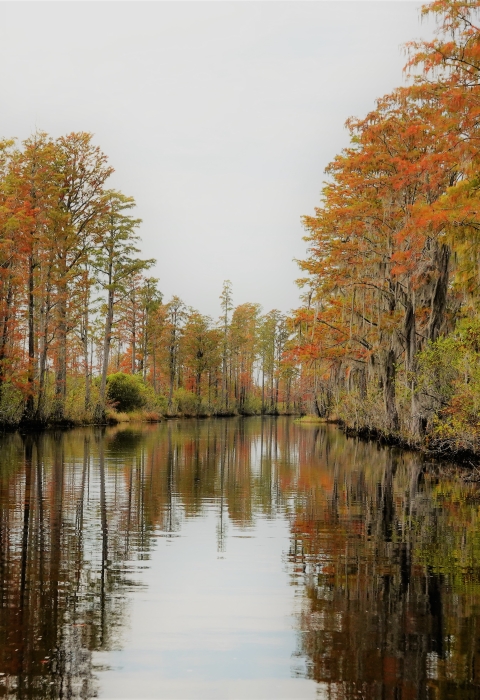
Does the U.S. Fish and Wildlife Service oppose Twin Pines Mine? The U.S. Fish and Wildlife Service opposes the proposed Twin Pines Minerals LLC, mining project and reclamation activities adjacent to the Okefenokee National Wildlife Refuge.
Based on independent evaluations, there is currently not enough information to properly evaluate the effects of withdrawing 1.44 million gallons of water per day from the Floridian aquifer.
The modeling and hydrogeologic characterization presented by the consultant for Twin Pines Minerals LLC is inadequate to assess this important question. Mining expansion northward along Trail Ridge presents a real threat to the swamp’s ecosystems. The further north that mining expands up Trail Ridge, the closer it approaches the Okefenokee swamp. Trail Ridge acts as an earthen dam blocking the swamp from draining to the east. Mining Trail Ridge poses a risk to this dam, which is part of an ancient and delicate ecosystem.
Are there potential impacts on the refuge from the mine that the Service is concerned about? The Service is concerned with mining-induced changes to surface and groundwater that could result in lowered groundwater levels in Okefenokee Swamp. We believe reduced water availability will negatively impact habitat for federally listed and at-risk fish and wildlife species.
Changes to water levels could result in changes to fire regimes and reduce the capacity of the swamp to retain and capture carbon through drying of peat. This drying could, in turn, increase the threat of catastrophic fire and the release of additional carbon through burning peat.
Wildfires in and around the Okefenokee swamp occur on a regular basis. The increased wildland fire activity from increased drought would threaten millions of dollars of commercial timberland that immediately surround Okefenokee swamp.
Does the Service agree with Twin Pines and Georgia’s Environmental Protection Department’s conclusion that the mine will not harm the refuge? If not, why not? The Service does not agree with the conclusion that the mine will not harm the refuge. Based on independent evaluation, there is currently not enough information to properly evaluate the effects of withdrawing 1.44 million gallons of water per day from the Floridian aquifer. Permitting mining nearby may lead to irreversible damage to the refuge, a National Natural Landmark National Natural Landmark The National Natural Landmarks Program preserves sites illustrating the geological and ecological character of the United States. The program aims to enhance the scientific and educational value of the preserved sites, strengthen public appreciation of natural history and foster a greater concern for the conservation of the nation’s natural heritage. The program was established in 1962 by administrative action under the authority of the Historic Sites Act of 1935. The first National Natural Landmarks were designated in 1963. Today, there are more than 600 National Natural Landmarks in 48 states, American Samoa, Guam, Puerto Rico and the U.S. Virgin Islands. Learn more about National Natural Landmark as designated by the Secretary of the Interior and an internationally recognized RAMSAR Wetland of International Importance.
As we consider actions that could alter the water levels and ecosystem balance of the Okefenokee Swamp, we need better information before taking a risk that could impact such an important national treasure.
We are urging the State of Georgia to refrain from issuing any final permits until our concerns are adequately addressed and additional data on the Floridan aquifer below the swamp can be obtained.
Is the Service concerned that the mining could expand beyond Twin Pines’ 582-acre demonstration mine in the future? Yes. While the proposed mine is 2.9 miles away from the edge of the swamp, if Twin Pines Minerals expand their mining activities northward into the remaining acres of their property as originally planned, the mine footprint will be within 400 feet of the swamp. As the ridge acts as an earthen dam blocking the swamp from draining to the east, this potential expansion northward along Trail Ridge presents a real threat to the swamp’s water levels and ecosystem balance.
Is the Service concerned that the mine could harm the refuge’s bid for World Heritage listing? Yes. Okefenokee National Wildlife Refuge has exceptional ecological values, which are considered for this designation. Location of a mine next to the refuge could reduce the refuge’s likelihood of being inscribed as a World Heritage Site.
What is the significance of the refuge from an ecological and climate change climate change Climate change includes both global warming driven by human-induced emissions of greenhouse gases and the resulting large-scale shifts in weather patterns. Though there have been previous periods of climatic change, since the mid-20th century humans have had an unprecedented impact on Earth's climate system and caused change on a global scale. Learn more about climate change perspective? The swamp has been designated as a National Natural Landmark by the Secretary of the Interior, and as a Wetland of International Importance by the Ramsar Convention on Wetlands. The name Okefenokee is derived from an ancient Creek/Muscogee word, Oh-guah-fen-ogah, which means “trembling waters in a low place.” The ecology of the Okefenokee Swamp sustained the lives of ancient peoples who depended on it for food, shelter, and community. And centuries later, this is still the case for people who call the Okefenokee region home.
The astounding thing about the Okefenokee is that the hydrology of the swamp is still intact, meaning that the ecosystem that you see there today is essentially the same as it would have been when the first people beheld its dark, flowing waters. The geological feature that allowed the swamp to form in the first place, and still allows it to exist, is the ancient barrier island known as Trail Ridge, which supports the integrity of the Okefenokee swamp. Trail Ridge was likely used as a travel corridor by the Muscogee Creek Nation’s ancestors, and burial mounds have been documented along portions of the feature.
The Okefenokee is important because it is a gigantic carbon storehouse. Because the waters of the Okefenokee are shallow and warm and therefore have low oxygen, vegetation that falls into the water does not completely decompose. That vegetation then piles on top of itself and forms thick mats of peat that store amazing amounts of carbon. It has been estimated that there is as much as 120,000,000 metric tons of carbon. That’s more than all the carbon stored in the plants growing in the Okefenokee!
Extensive peat beds store notable amounts of carbon and preserves the historic record of regional terrestrial and freshwater ecosystems over the past several millennia. With less than 1% of the refuge’s peatland disturbed by man, it is the largest remaining intact planar peat bed on the North American Coastal Plain and within the Northern Hemisphere’s subtropical zone.
In addition, the refuge’s uplands represent the southern yellow pine savannas that once were the most extensive “forest” type in the United States. With only 4% of the original range of longleaf pine remaining today, restoration efforts on the refuge contribute to the longleaf pine initiative across the Southeast. The Okefenokee Swamp is the largest precipitation-based freshwater wetland ecosystem in the United States and one of the world’s largest naturally driven freshwater ecosystems in the highly populated temperate/subtropical climate zone.
The refuge represents the 36th recognized global biodiversity hotspot, the North American Coastal Plain, by providing quality freshwater wetland and upland habitats that support 14% of the flora species and 29% of the fauna species found in this hotspot.
North American Coastal Plain has a significant number of endemics, and many are represented within Okefenokee National Wildlife Refuge. The refuge is world renowned for its herpetofauna and supports 25% of the reptile species and 32% of the amphibian species that are considered endemic to the North American Coastal Plain. Twelve percent of the endemic bird species utilize Okefenokee National Wildlife Refuge including the endangered Red-cockaded Woodpecker and threatened Wood Stork. Nine percent of the endemic fish species prosper within the refuge’s acidic, tannin waters. The expanse of Okefenokee National Wildlife Refuge also supports a large population of Florida black bears and in the past was considered for the re-introduction of Florida panthers, two large mammal species endemic to the North American Coastal Plain.
More than 850 plant species have been identified on the refuge, which includes 18 carnivorous plant species, with the giant Okefenokee pitcher plant (Sarracenia minor var. okefenokeensis) endemic to the Okefenokee Swamp. There is also numerous 500+ year old pond cypress trees scattered over approximately 2,000 acres of the swamp. The refuge is located within the Southeast United States Conifer Savannas Terrestrial ecoregion where only 1-4% of the habitat remains unaltered. Floral species richness within this habitat is “unparalleled outside of [the] tropics,” especially regarding rare, endemic, and carnivorous species.
Where can more information be found on the Twin Pines Mining Project and the permit process? The decision to issue final permits for Twin Pines Mine is with the Georgia Environmental Protection Division (GAEPD). https://epd.georgia.gov/twin-pines
Latest Stories
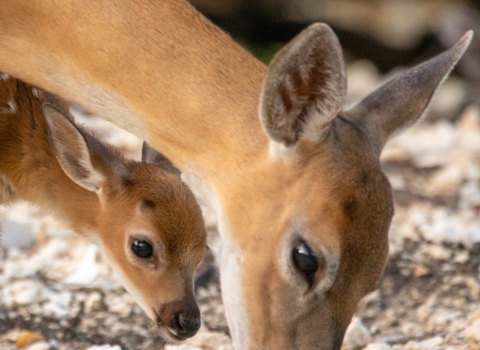
You are exiting the U.S. Fish and Wildlife Service website
You are being directed to
We do not guarantee that the websites we link to comply with Section 508 (Accessibility Requirements) of the Rehabilitation Act. Links also do not constitute endorsement, recommendation, or favoring by the U.S. Fish and Wildlife Service.
Main Content
- Yekaterinburg
- Novosibirsk
- Vladivostok

- The best of Russian Capitals tour
- Tours to Russia
- Practicalities
- Russia in Lists
Rusmania • Deep into Russia
MSC and SPB Tours

The best of Russian Capitals tour / 10D
► Tours ► St Petersburg and Moscow tours ► The best of Russian Capitals tour

On this private tour, we have selected for you the best sights in the most popular tourist destinations in Russia: Moscow and St Petersburg. In Moscow, you will see the most iconic places in the Russian capital: Red Square, St Basil’s Cathedral, the Kremlin, Sparrow Hills and Victory Park, as well as some of the most beautiful stations of the Moscow Metro. You will visit the main collection of Russian art in the country: the Tretyakov Gallery, and enjoy great views of the city from a cruise along the River Moscow. In addition to all this, you will also go to the VDNKh exhibition park, which will give you a taste of the Soviet Union with its many Soviet-era pavilions and spectacular monuments.
You will get to St Petersburg via a high-speed train. In the Northern Capital, as St Petersburg is often called, you will visit the main sights in the city and two of the grandest imperial residences located just outside the city. You will, of course, visit the famous Winter Palace where the tsars once resided and which now holds the State Hermitage Museum, and also see where most of the tsars were buried in the cathedral of the Peter and Paul Fortress. You will have a boat cruise around the city known as the Venice of the North due to its many canals and bridges and guided tours of two of the city’s cathedrals: the Saviour Cathedral on the Spilled Blood, which is wonderfully decorated with mosaics, and St Isaac’s Cathedral, one of the largest cathedrals in the world.
From St Petersburg, you will have two trips. One to Pushkin (formerly Tsarkoe Selo) to visit the Catherine Palace and its famous Amber Rooms and the other to Peterhof to walk among the gardens of the estate, famous for its many fountains in various forms.
WHY YOU’LL LOVE THIS TOUR
You’ll see all the main sights of Moscow and St Petersburg in one trip. We included guided tours in the most iconic places of the cities such as the Moscow Kremlin, the State Hermitage Museum, and the Peterhof and Catherine Palaces (including the famous Amber Room). You’ll get a sense of imperial, Soviet and modern Russia.
1 DAY | ARRIVAL IN MOSCOW

2 DAY | TOUR OF MOSCOW

Breakfast in the hotel.

Victory Park - a memorial complex dedicated to the Second World War. The main obelisk here is 141.8 metres symbolising the 1418 days of the Soviet Union’s participation in the Great Patriotic War as WWII is called in Russia.
Viewing Platform on Sparrow Hills - this is located opposite the main building of the Moscow State University - one of the buildings known as the Seven Sisters or Stalin’s Skyscrapers - and from here you can get a great view of central Moscow.
Ulitsa Tverskaya - this is the main street in Moscow and in Soviet times it was completely renovated (and renamed in honour of Gorky) meaning that many of the buildings here are in the empire architectural style preferred by Stalin.
Novodevichy Convent - one of the oldest convents in Russia and it hasn’t changed much in terms of its architectural style over 500 years. It is protected by UNESCO.
Krutitskoe Podvorye - this unique corner of Moscow is like a time capsule taking you back centuries.

3 DAY | RED SQUARE AND MOSCOW KREMLIN

- Aleksandrovsky Gardens – city gardens located next to the kremlin which have several interesting statues.
- Red Square – Russia’s most famous and most beautiful square where you will find St Basil’s Cathedral.
- GUM - the Russian equivalent of Paris’s Galeries Lafayette or London’s Harrods with a Soviet atmosphere and an interesting history.
- Lenin’s Mausoleum – the resting place of the founder of USSR.
- Bolshoi Theatre – one of the most famous theatres in the world.
- Zaryadye Park - from here you can enjoy stunning views of the Kremlin from an artificial hill while also walking through a birch forest, swamp and tundra.
- Christ the Saviour Cathedral – the main cathedral of the Russian Orthodox Church.
- Lubyanka Building – once the headquarters of the KGB, now home to the FSB.

4 DAY | SOVIET HERITAGE

DAY 3 | ART AND ARCHITECTURE
5 day | train to st petersburg.

High-Speed train to St Petersburg , which takes about four hours.
Upon arrival in St Petersburg - transfer to your hotel.
6 DAY | TOUR OF ST PETERSBURG

- Peter and Paul Fortress and Cathedral – the oldest part of St Petersburg. The fortress’s cathedral is now a shrine holding the tombs of almost all emperors and empresses of Russia.
- Nevsky Prospekt – St Petersburg’s main thoroughfare.
- Our Lady of Kazan Cathedral – Russia’s equivalent of St Peter’s Basilica in Rome, complete with a large colonnade.
- The Field of Mars – a memorial established after the Russian Revolution.
- Saviour on the Spilled Blood Cathedral (exterior) – a beautiful cathedral somewhat reminiscent of Moscow’s St Basil’s Cathedral, built on the site of the assassination of Emperor Alexander II.
- St Michael’s Castle (exterior) – a residence built for Emperor Paul, where he was subsequently assassinated.
- Anichkov Bridge – one of St Petersburg’s most beautiful bridges decorated with four statues of youths taming wild horses.
- Bronze Horseman – an equestrian statue of Peter the Great which has become a symbol of the city.
- St Isaac’s Cathedral – the largest cathedral in St Petersburg, the current version dates from 1818 and features a huge dome.
7 DAY | TOUR OF THE CATHERINE PALACE

8 DAY | TOUR OF PETERHOF

9 DAY | ST PETERSBURG'S CATHEDRALS

10 DAY | DEPARTURE

If you are departing Russia from Moscow we can organise for you train tickets from St Petersburg to Moscow and a transfer to the Moscow airport.
DAY 10 | DEPARTURE ST
- The tour is available the whole year round starting on any day, but please take into account that the museum’s working hours and days-off vary so we reserve the right to change the itinerary while trying to save the excursion programme.
- Optional excursions should be booked before the start of the tour to schedule the itinerary.
- Transportation in Moscow, where travel by metro is designated, can be changed to a car upon request, but please note that the transport situation in Moscow is not very good, so you could get stuck in a traffic jam.
- Tickets to museums cannot be sold without an excursion with a guide.
- During state holidays and celebrations, Red Square may be closed (either partially blocked off or completely closed).
- The price of the tour may be increased during the period of the White Nights (11JUN-10JUL) and when the International Economic Forum (end of May or beggining of June) is being held in St Petersburg. Please check the price when booking.
- All excursions/guided tours included in the itinerary are private which means private guides and private transport along the programme - unless otherwise stated.
- Best time to travel on this route: from the end of April to mid-October and from December to mid-March.
• CANCELLATION POLICY •
Date of the tour, number of travellers, accommodation:.

- Private transport service according to the programme
- Private guide service according to the programme
- Second class tickets for the Premium train from Moscow to St Petersburg
- Entrance tickets to museums.
- Accommodation in a hotel of a category of your choice, central location, standard DBL rooms with breakfast.
- Russian local sim card with unlimited data
- 24h emergency support during the tour
- Visa support documents

- Plane tickets to/from Russia
- Tips for a guide or driver
- Meals (except breakfast)
- Evening performances such as the ballet at the Bolshoi.
OTHER TOURS

Plan your next trip to Russia
Ready-to-book tours.
Your holiday in Russia starts here. Choose and book your tour to Russia.
REQUEST A CUSTOMISED TRIP
Looking for something unique? Create the trip of your dreams with the help of our experts.
2018 Primetime Emmy & James Beard Award Winner
R&K Insider
Join our newsletter to get exclusives on where our correspondents travel, what they eat, where they stay. Free to sign up.
A History of Moscow in 13 Dishes
Featured city guides.

IMAGES
COMMENTS
Explore the Okefenokee Swamp with professional guides who share their knowledge and passion for the ecosystem. Choose from 90-minute boat tours, sunset tours, extended excursions, or custom tours by canoe, kayak or motorboat.
Explore the Okefenokee Swamp, a unique ecosystem with diverse wildlife and cultural history. Learn about the refuge's programs, events, and recreational opportunities, including canoeing, hiking, hunting, and birdwatching.
Explore the wildlife and history of North America's largest blackwater swamp at three unique entrances: Okefenokee National Wildlife Refuge, Stephen C. Foster State Park, and Okefenokee Swamp Park. Enjoy camping, boating, hiking, and more in this natural wonderland.
Okefenokee Adventures: This outfitter provides guided tours, canoe and kayak rentals, and other services to help you explore the Okefenokee Swamp. Okefenokee Pastimes : This eco-lodge and campground is located near the Okefenokee National Wildlife Refuge and offers guided tours, educational programs, and other activities.
Guided Boat & Canoe Swamp Tours at Okefenokee Adventures. Swamp Tours and Extended Excursions with our knowledgeable and experienced guides ... Okefenokee Swamp Park will remain open for all advertised evening events. (912) 283-0583. [email protected]. Group Reservations: (912) 283-0583 or email [email protected]. Okefenokee Adventures ...
Okefenokee & Satilla Expeditions is local family owned and operated and based out of our home county, Ware County, Georgia! We are your source for amazing guided tours in the incredible Okefenokee Swamp and the beautiful Satilla River. We provide Naturalist-guided ecology and history day tours, camping expeditions, rentals, and shuttle service ...
The wonderland of the Okefenokee is a significant part of America's heritage, a beautifully preserved segment of what was here when America began. Located in the Okefenokee National Wildlife Refuge, the Okefenokee Swamp Park is a convenient point of entry and a magnificent show-window for this natural wonderland. Reflective waters mirroring the overhanging beauty lead to all points in this ...
About. Okefenokee Adventures is the Visitor Services Contractor located at the primary entrance to Okefenokee National Wildlife Refuge - also known as the East entrance, Folkston entrance or Suwannee Canal Recreation Area. We offer guided, interpretive tours, canoe & kayak tours & rentals, walking & driving trails, full service cafe & gift shop.
The admission to the park is $16-17 and includes a ride on Okefenokee Railroad, admittance to "Eye on Nature" educational show, and access to the Boardwalk, Primitive Trail (when accessible), and the exhibit buildings. You can also purchase a boat tour/admission combo ticket for $27 per adult and $22 per child.
5 Hour Forests & Billy's Island Boat Tour: $180 per adult / $90 per child (1 person: $360) SUNSET BOAT TOURS AND SUNSET PADDLE TOURS OF OKEFENOKEE SWAMP. Sunsets in Okefenokee can be stunning… combined with the incredible serenity of floating in the quiet wilderness as the sun begins to set… it feels hauntingly beautiful.
The swamp here in general is more open for easier viewing of birds and alligators. Boat tours from this entrance cost $28 and under for a 90-minute guided tour. The boats are shaded, comfortable, and seat a fair amount of people. You must also pay a $5/car fee to enter the refuge, good for seven days.
The Lady Suwanee's track was installed by B.R. Moore Construction Company and completed in the winter of 1999. The railroad track began giving out tours of the swamp in the spring of 1999. The 1.5-mile railroad system at the Okefenokee Swamp Park serves as a mode of transportation for the visitors, circling part of the Okefenokee Swamp.
Venture deep into the mysterious Okefenokee Swamp on a two-hour boat ride and 1.5-mile boardwalk exploration to learn about black water lakes, pond cypress and the American alligator. During a self exploration learn the fascinating history of Fort Clinch, an important 1800s fortress for both Confederate and Union forces.
Okefenokee National Wildlife Refuge. At the Suwannee Canal Recreation Area in Folkston, GA, Okefenokee National Wildlife Refuge offers Swamp Island Drive. This is a self-guided auto tour "lollipop route" of a total 7.2 miles. Lollipop routes are routes that go in and come out the same way, but have a small loop at the end for seamless ...
At 407,000 acres, the Okefenokee is the largest ecologically intact blackwater swamp in North America and the largest National Wildlife Refuge east of the Mississippi River. It hosts or shelters a ...
Environmentalists warned that a mine proposed to be built near the Okefenokee National Wildlife Refuge could damage the swamp's fragile ecosystem. Supporters argue the mine will invigorate the ...
Some lawmakers and conservationists had portrayed SB 132 as the last, best hope to buy time for long-term solutions to protect the Okefenokee, the largest blackwater swamp in North America. But ...
Carter ran guided tours in the Okefenokee for 25 years and her family, the Chessers, settled in the swamp in the 1800s. Today, visitors can explore one of their early homes, on an island that ...
Welcome to the 628DirtRooster website where you can find video links to Randy McCaffrey's (AKA DirtRooster) YouTube videos, community support and other resources for the Hobby Beekeepers and the official 628DirtRooster online store where you can find 628DirtRooster hats and shirts, local Mississippi honey and whole lot more!
The Okefenokee National Wildlife Refuge is one of Georgia's largest national parks. Twin Pines' newly approved mining initiatives now threaten the livelihood of the refuge's unique ecosystems. // Photo courtesy of Stephen Morton AP Photo. Tucked in the southeast corner of Georgia, the Okefenokee Swamp spans more than 400,000 acres and is ...
The Service is concerned with mining-induced changes to surface and groundwater that could result in lowered groundwater levels in Okefenokee Swamp. We believe reduced water availability will negatively impact habitat for federally listed and at-risk fish and wildlife species. Changes to water levels could result in changes to fire regimes and ...
Watch NBC Nightly News with Lester Holt excerpt: Environmentalists warn of threat to famed Okefenokee Swamp - NBC.com
10-days tour to Russian Capitals - Moscow and St Petersburg with excursions to the most beautiful and famous sights of the cities
This tour of Moscow's center takes you from one of Moscow's oldest streets to its newest park through both real and fictional history, hitting the Kremlin, some illustrious shopping centers, architectural curiosities, and some of the city's finest snacks. Start on the Arbat, Moscow's mile-long pedestrianized shopping and eating artery ...
Price per person. 641,69. View details. About the tour Reviews 10. 8 days / 7 nights. St. Petersburg Moscow. We offer you a unique opportunity to visit Russia's two largest cities, Moscow and St. Petersburg. This fascinating, week-long tour will take you to the historic Russian capitals that have always played the most important part in the ...